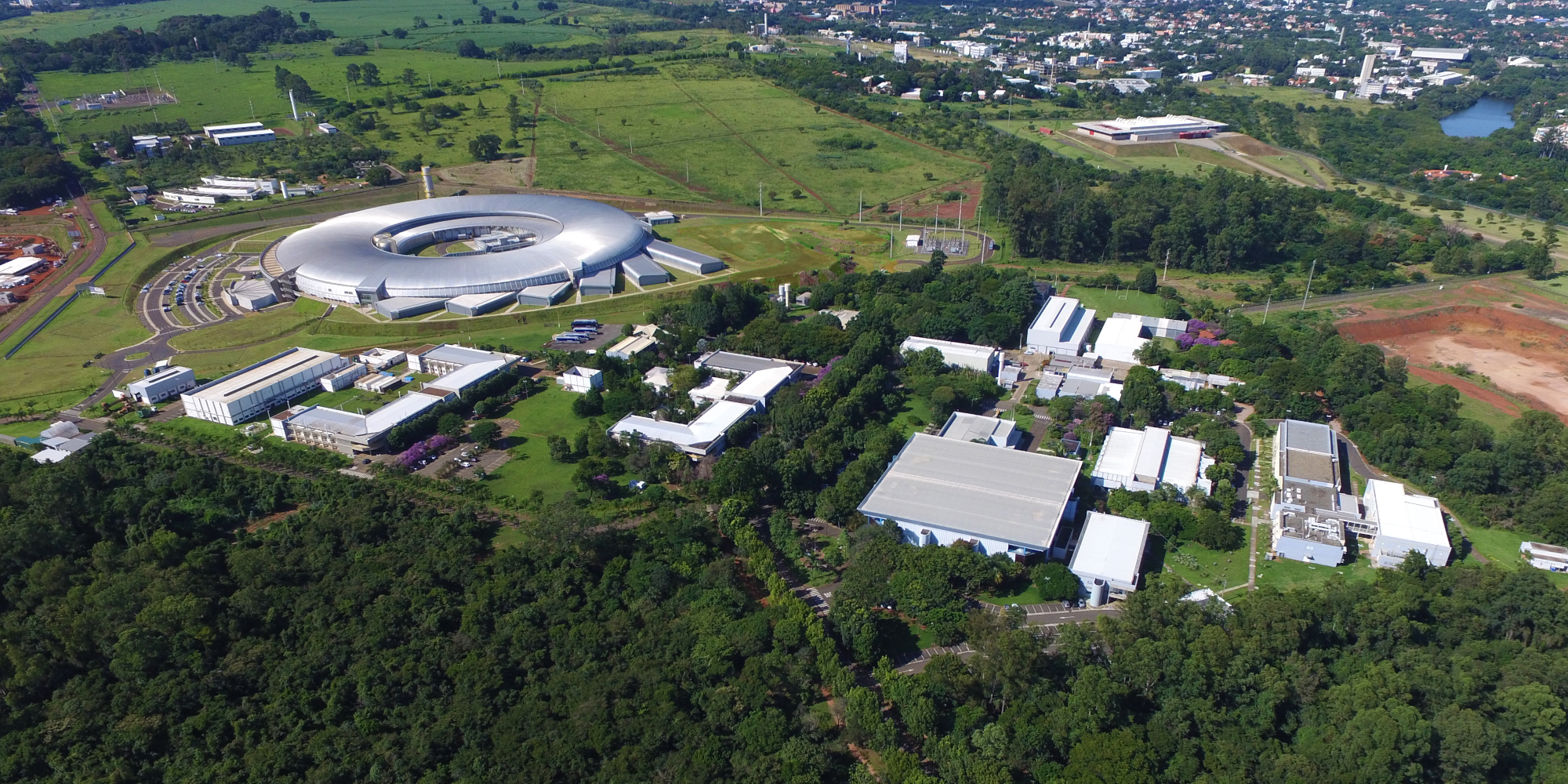The history of the Brazilian Synchrotron Light Laboratory (LNLS) and, therefore, of the Brazilian Center for Research in Energy and Materials (CNPEM) begins in the 1980s, with the first Brazilian big scientific project. At that time, the Brazilian National Council for Scientific and Technological Development (CNPq) requested the Brazilian Center for Research in Physics (CBPF) proposals for the construction of a laboratory with scientific equipment that could benefit researchers from all over the country.
Thus, in 1982, the Synchrotron Radiation Project is initiated, responsible for developing feasibility studies for the construction of a synchrotron light source, the first equipment of its kind in the Southern Hemisphere.
On December 5, 1984, the Brazilian Synchrotron Radiation Laboratory (LNRS) is formally established. In January 1985, a group of researchers travel to the Stanford Synchrotron Radiation Laboratory (SSRL), at Stanford University (USA), to develop the conceptual project of the Brazilian light source.
In September 1986, the laboratory is renamed as Brazilian Synchrotron Light Laboratory (LNLS). The implementation of LNLS starts in the following year and, in July 1987, it is installed in a building acquired by CNPq, in Campinas, SP. There, a group of researchers, engineers, and technicians begin to design and develop the components of this complex machine.
In 1990, the Laboratory receives an area of 380 thousand square meters, donated by the Government of the State of São Paulo, for the installation of its definitive headquarters. In December, even before the machine is built, the first LNLS Annual Users’ Meeting takes place with the goal to discuss the characteristics and priorities of the future experimental stations (called beamlines) that would be installed.
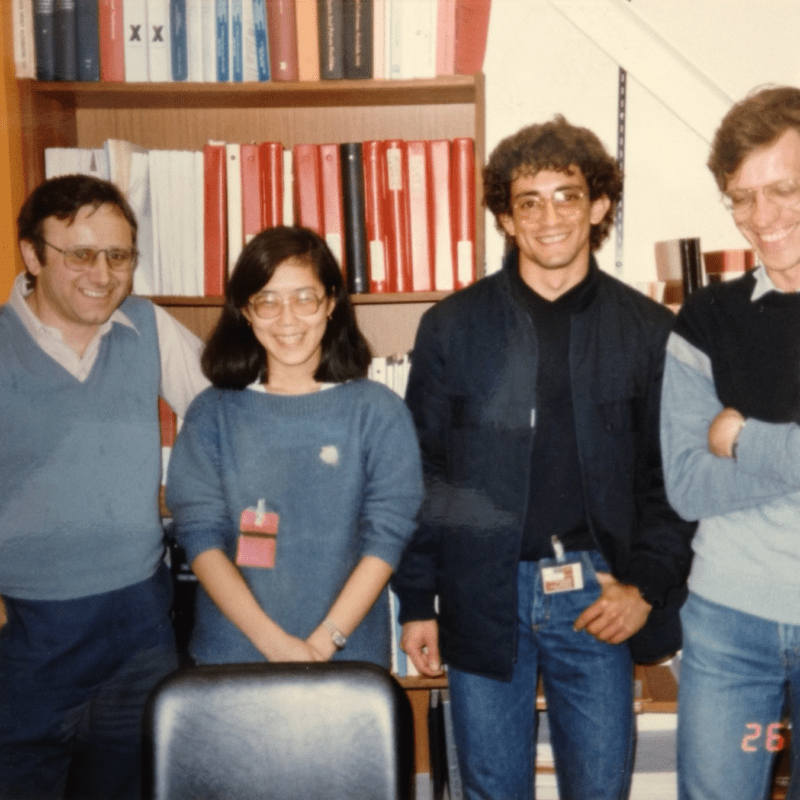
Português:
Em janeiro de 1985, um grupo de pesquisadores, liderados por Ricardo Rodrigues, viaja para o Stanford Synchrotron Radiation Laboratory (SSRL), da Universidade de Stanford (EUA), para desenvolver o projeto conceitual de uma fonte de luz síncrotron para o Brasil. A foto mostra, da esquerda para a direita: Helmut Wiedemann (pesquisador do SSRL que supervisionou os brasileiros na ocasião), e os pesquisadores Liu Lin, Hélio Tolentino e Ricardo Rodrigues.
English:
In January 1985, a group of researchers, led by Ricardo Rodrigues, travel to the Stanford Synchrotron Radiation Laboratory (SSRL), at Stanford University (USA), to develop the conceptual project of a synchrotron light source for Brazil. The photo shows, from left to right: Helmut Wiedemann (SSRL researcher that supervised the Brazilians in the occasion), and the researchers Liu Lin, Hélio Tolentino and Ricardo Rodrigues.
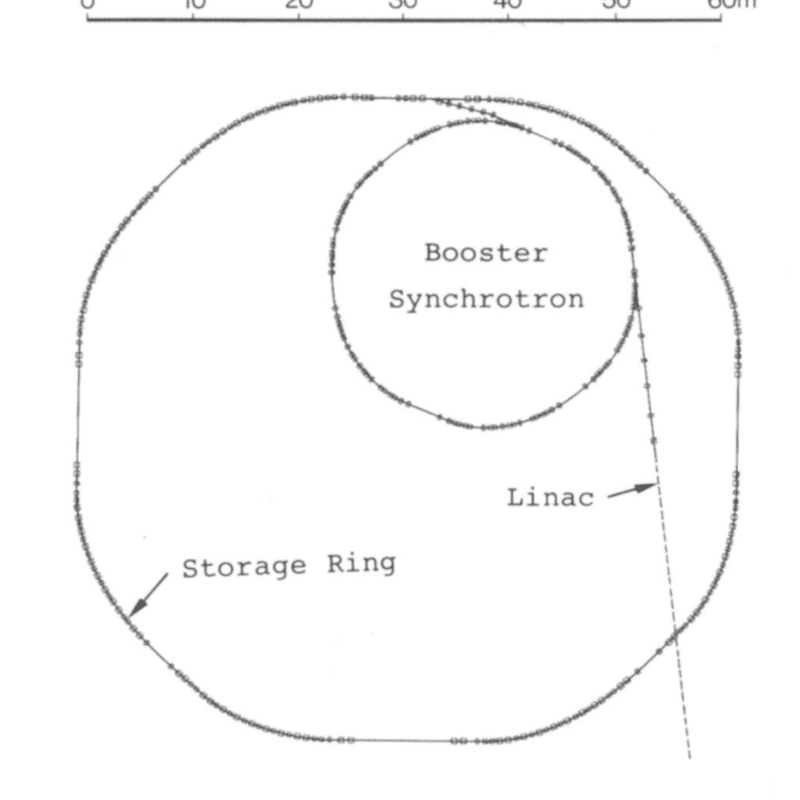
Português:
Os pesquisadores voltam com a proposta de uma máquina incluindo um acelerador injetor (booster) e um anel de armazenamento projetado para energia de 2 a até 3 GeV (giga eletron-volts). A foto mostra o diagrama do anel de armazenamento e do sistema de injeção do Projeto 1.
English:
The researchers return with a proposal for a machine including an accelerator booster and a storage ring designed for 2 to 3 GeV (giga electron volts) energy. The photo shows the diagram of the storage ring and the injection system of Project 1.
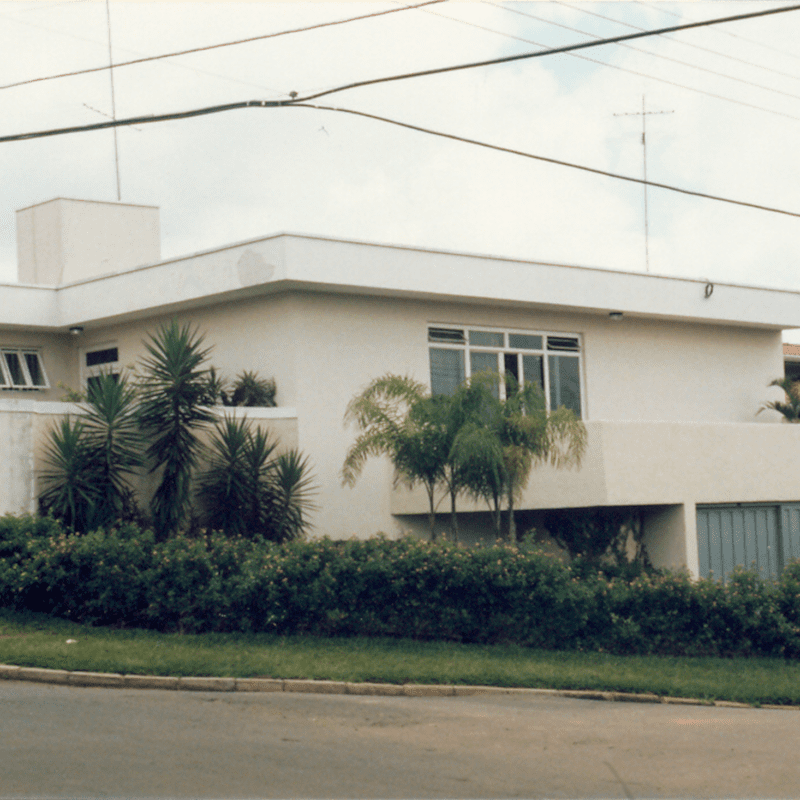
Português:
A implantação do LNLS é iniciada em uma casa alugada no bairro Jardim Santa Cândida, em Campinas. Nesta primeira sede começam as contratações de alguns físicos, engenheiros e técnicos.
English:
The LNLS’ implementation starts in a rented house in the Jardim Santa Cândida district, in Campinas. In this first headquarters, the hiring of some physicists, engineers and technicians begins.
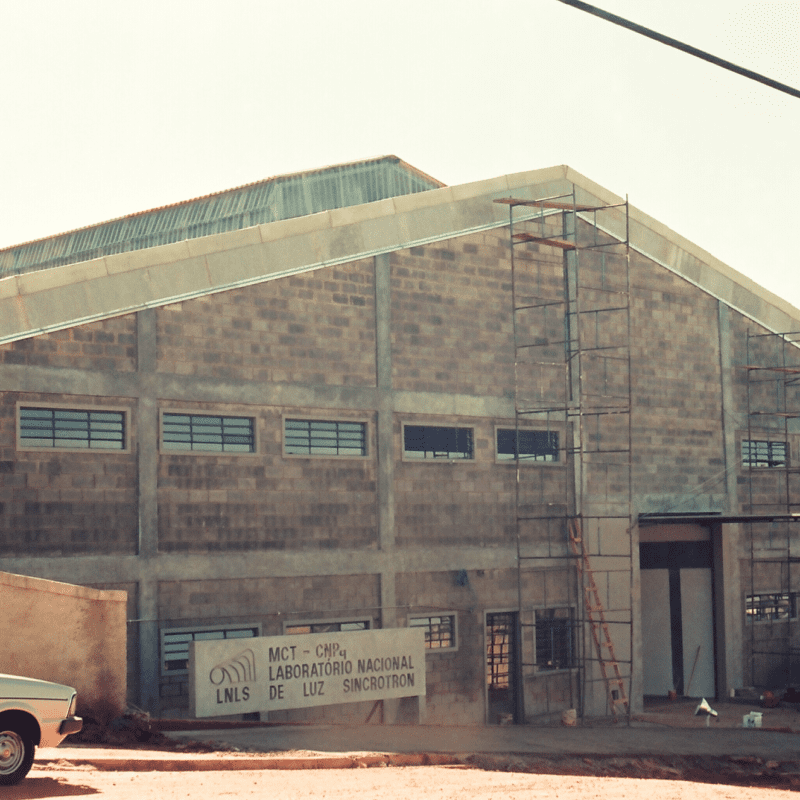
Português:
O CNPq adquire galpão no bairro Jardim Santa Cândida, que passou a abrigar a equipe do LNLS a partir de julho.
English:
CNPq acquires an industrial warehouse at the Jardim Santa Cândida district, which houses the LNLS team from July on.
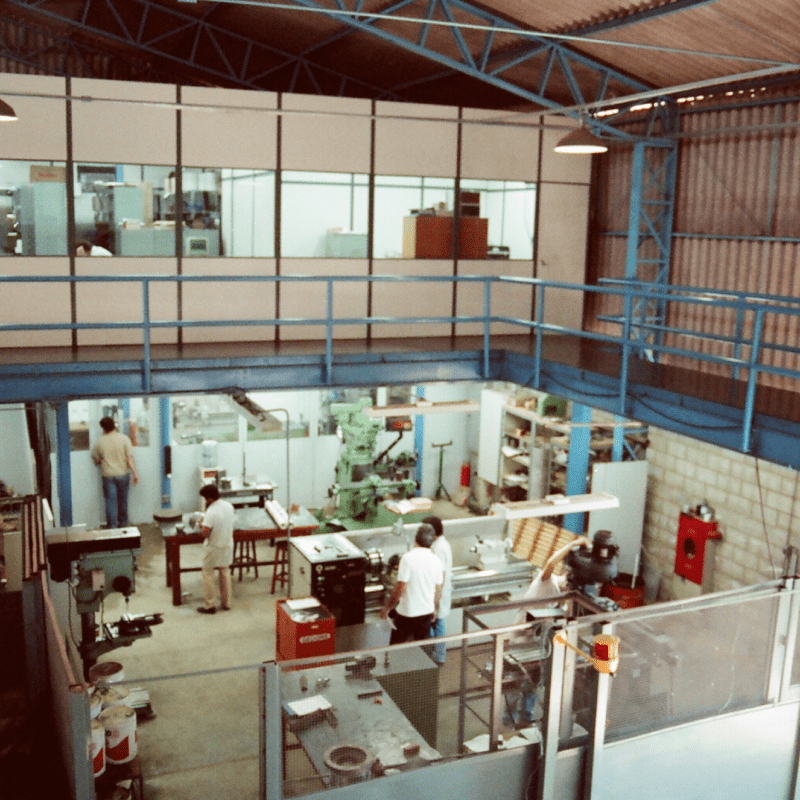
Português:
Vista da oficina mecânica e escritórios.
English:
View of the machine shop and offices.
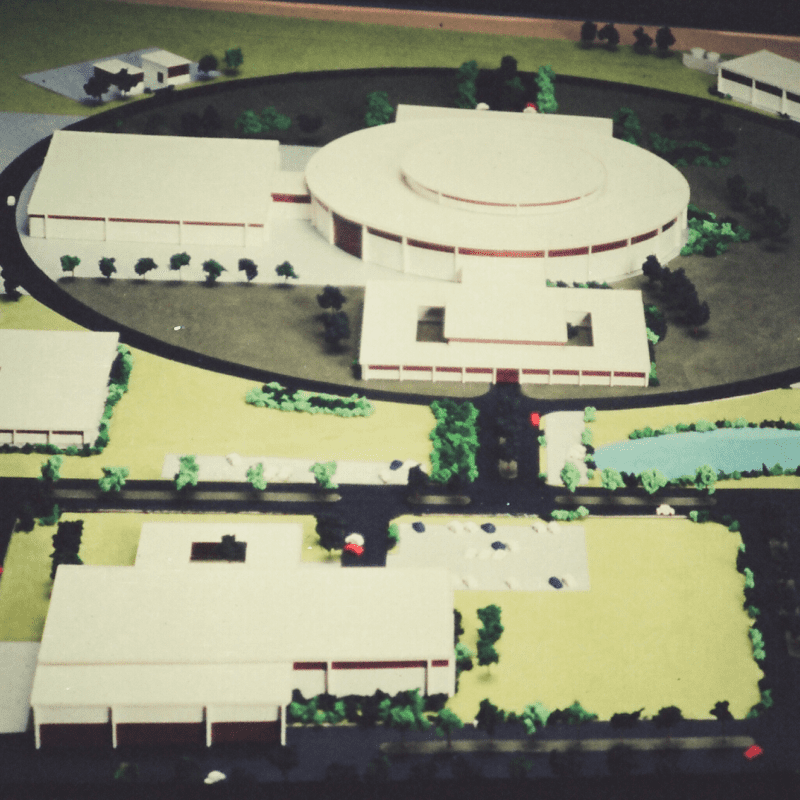
Português:
Maquete da primeira proposta de campus para o LNLS.
English:
Model of the first proposal for the LNLS campus .
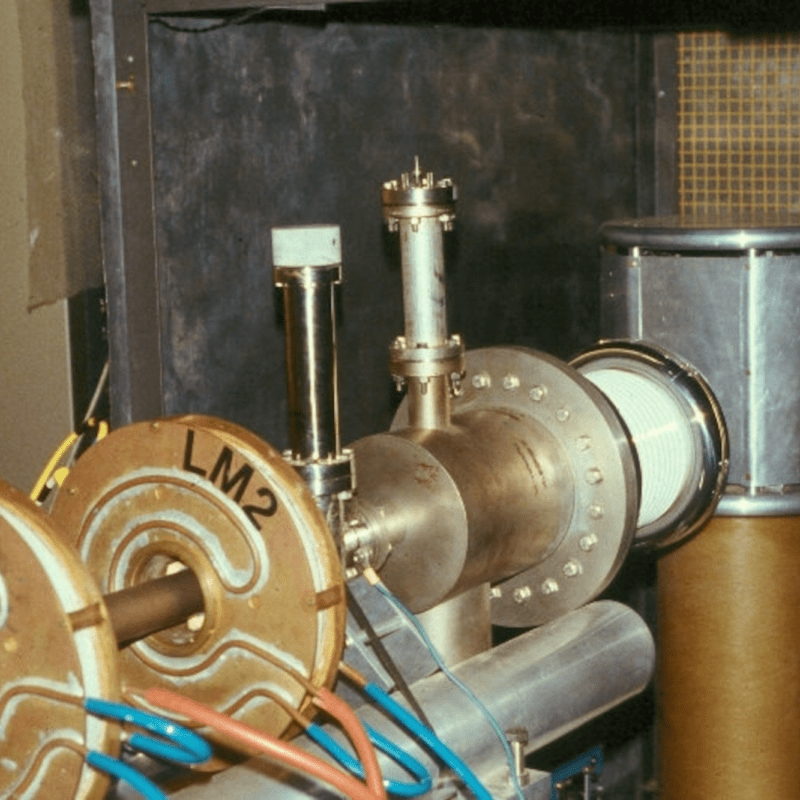
Português:
Em 1988, ocorrem os testes do primeiro canhão de elétrons, equipamento responsável pela emissão dos elétrons que são posteriormente acelerados.
English:
In 1988, tests were conducted on the first electron gun, the equipment responsible for the emission of electrons that are later accelerated.
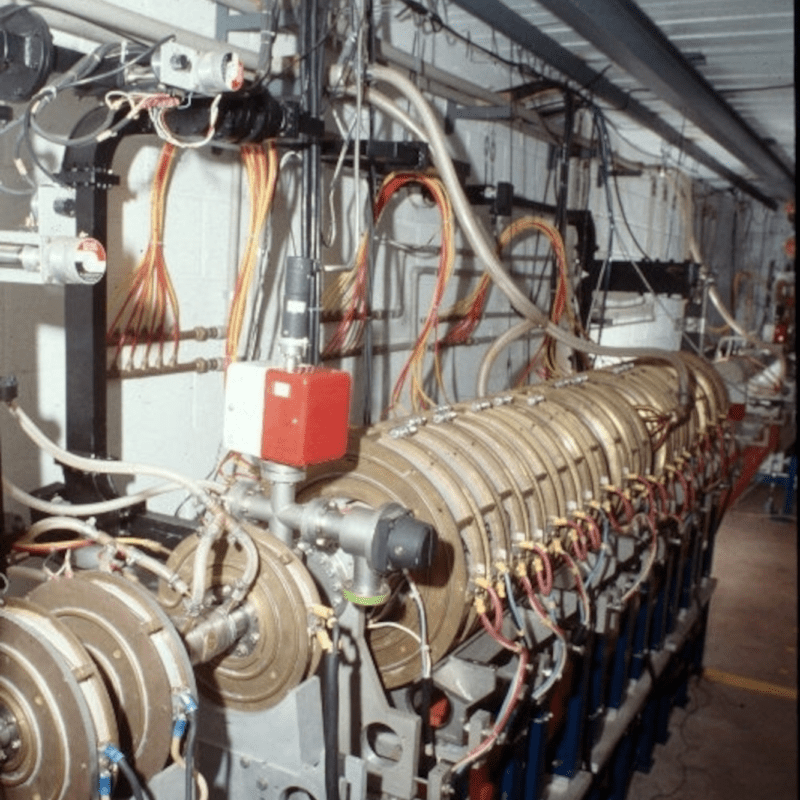
Português:
Em dezembro é concluída a construção de uma parte importante da máquina: o acelerador linear, ou linac, em uma versão com energia de 50 MeV, que emite o primeiro feixe de elétrons.
English:
In December, construction of an important part of the machine is completed: the linear accelerator, or linac, in a version with an energy of 50 MeV, which emits the first beam of electrons.
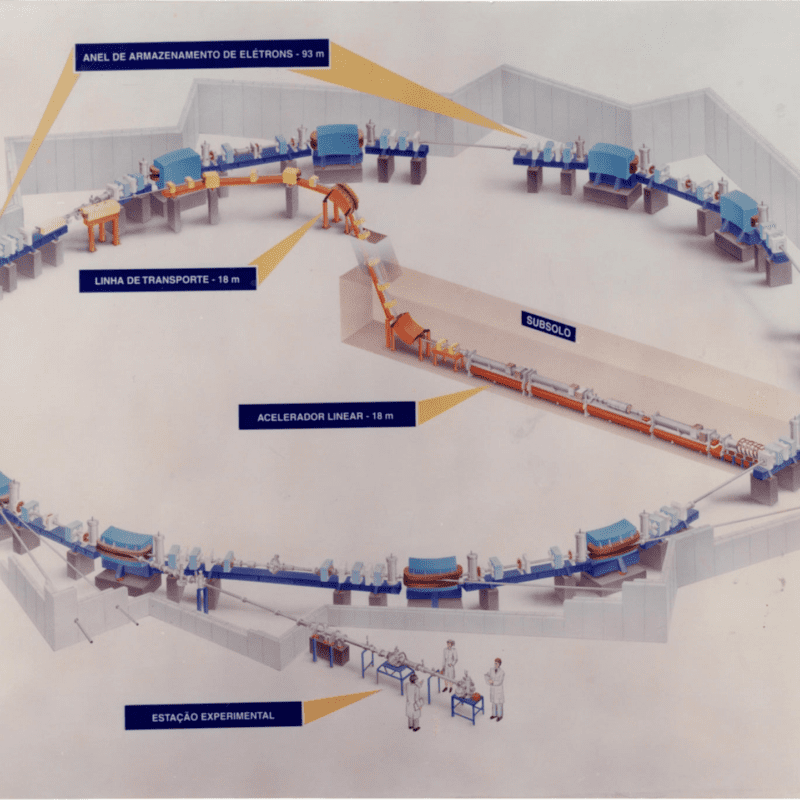
Português:
O projeto original da fonte de luz síncrotron é revisto: o Booster é removido e a energia de operação do anel de armazenamento é reduzida de 2 para 1,15 GeV (giga elétron volts).
English:
The original design of the synchrotron light source is revised: the Booster is removed and the operating energy of the storage ring is reduced from 2 to 1.15 GeV (giga electron volts).
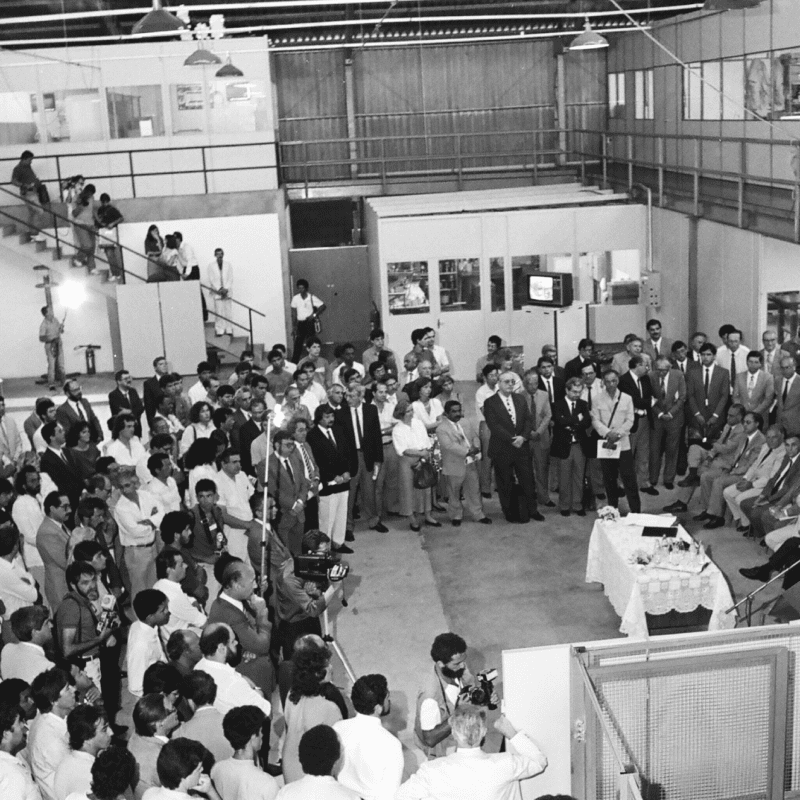
Português:
Em 19 de fevereiro ocorre a cerimônia de apresentação do acelerador linear, que marca a conclusão da primeira etapa do projeto.
English:
On February 19, the ceremony for the presentation of the linear accelerator takes place, which marks the conclusion of the first stage of the project.
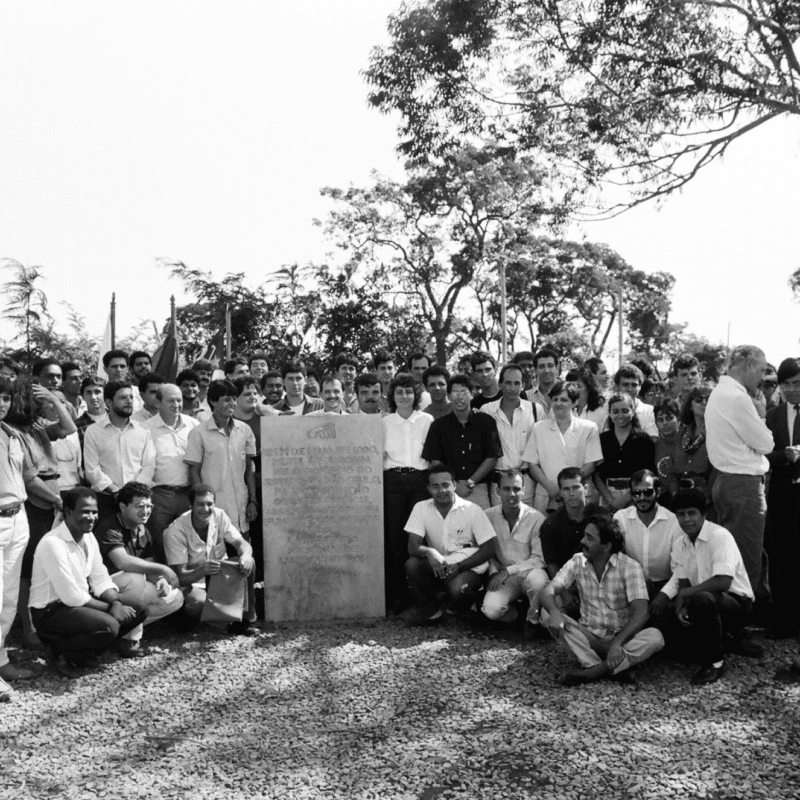
Português:
Equipe do LNLS durante a cerimônia de assentamento da Pedra Fundamental do futuro campus do LNLS, em uma área de 380 mil metros quadrados localizada no Polo de Alta Tecnologia de Campinas. A área foi cedida pelo Estado de São Paulo.
English:
LNLS team during the cornerstone laying ceremony of the future campus of LNLS, in an area of 380 thousand square meters located in the High Technology Hub of Campinas. The area was donated by the State of São Paulo.
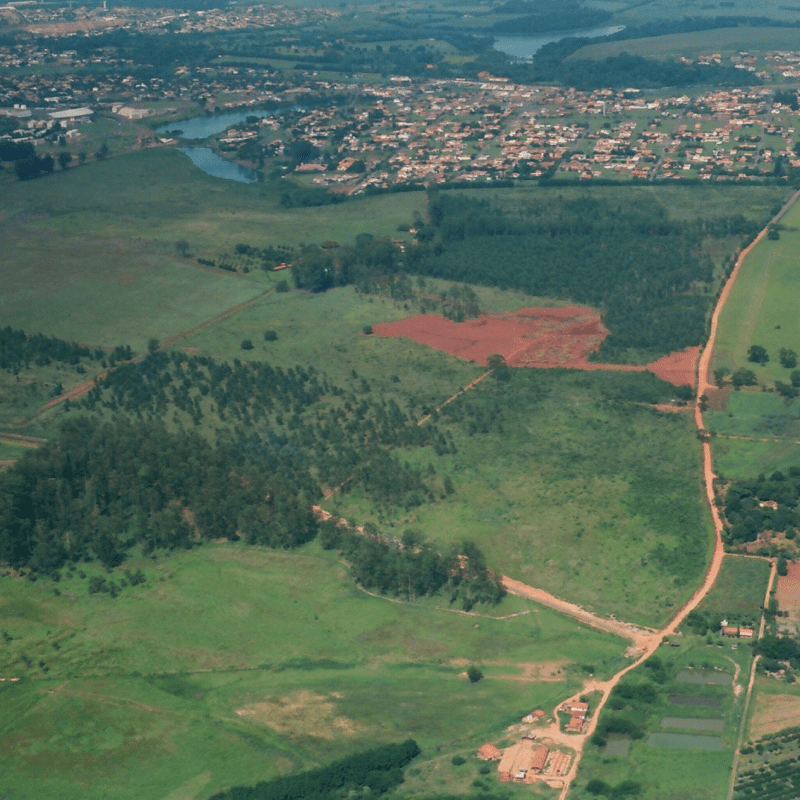
Português:
Em 19 de dezembro é feita a primeira foto aérea do campus do LNLS, já com área terraplenada para construção dos prédios.
English:
On December 19, the first aerial picture of the LNLS campus is taken, with the area already leveled for the construction of the buildings.

LNLS team during the cornerstone laying ceremony of the future campus of LNLS, in an area of 380 thousand square meters located in the High Technology Hub of Campinas. The area was donated by the State of São Paulo.
In 1992, the assembly of the first of the beamlines planned to operate in the future Brazilian light source is completed. This beamline is installed at the Center for Advanced Microstructures and Devices (CAMD), at the University of Louisiana (USA), to allow the first tests before the completion of the LNLS machine.
In October 1995, the construction of the 6,400-square-meter storage ring building is completed and the LNLS team begins to move to the site for the start of the synchrotron installation. In May 1996 the first electron loop in the storage ring takes place. In the second semester the first beamlines begin to be installed, and in October synchrotron light is observed for the first time in one of them.
Finally, on July 1st, 1997, the synchrotron light source of the LNLS, called UVX, the first electron accelerator of its kind in the Southern Hemisphere and, until its decommissioning, the only one in Latin America, is opened to the science and technology communities. At the time, UVX had seven beamlines.
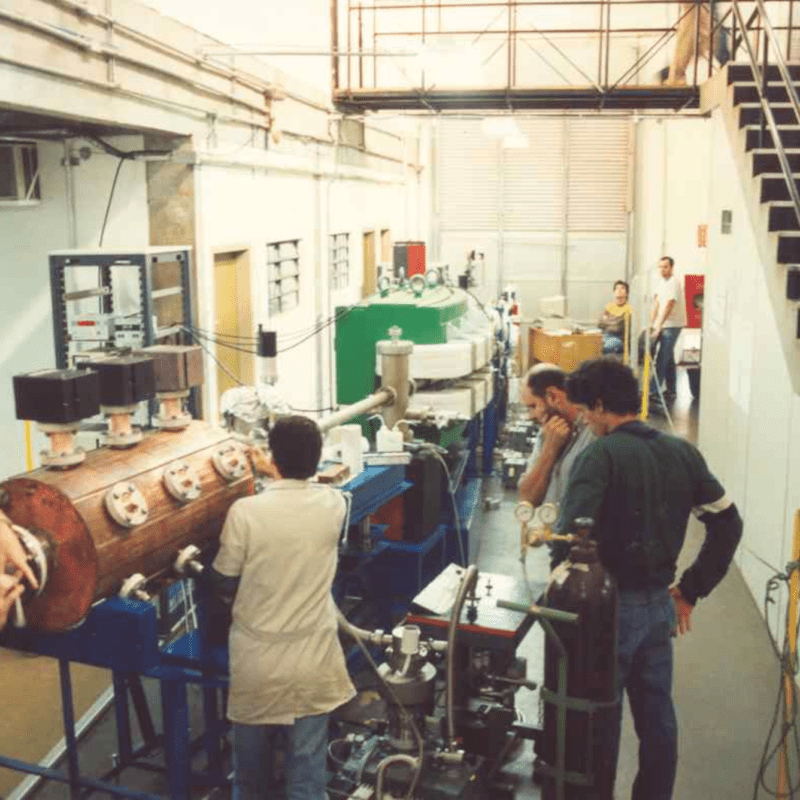
Português:
Montagem de um corte de 1/12 do anel de armazenamento de elétrons e de uma linha de luz.
English:
Assembling of a 1/12 section of the electron storage ring and a beamline.
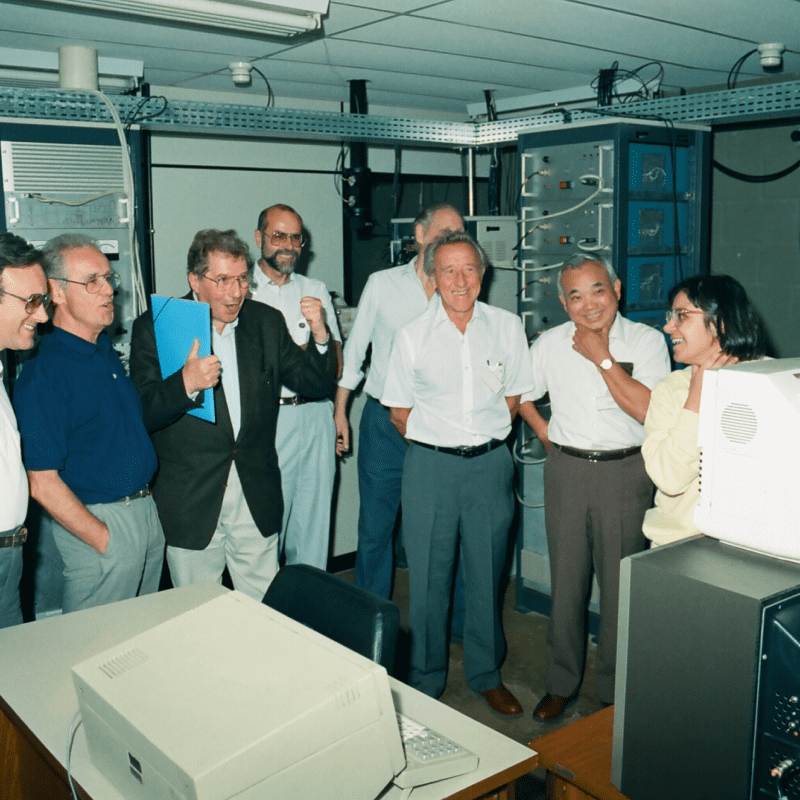
Português:
Funcionários do LNLS apresentam o Linac (acelerador linear) ao Painel Internacional de Avaliação do Projeto.
English:
LNLS staff present the Linac (linear accelerator) to the International Project Review Committee.
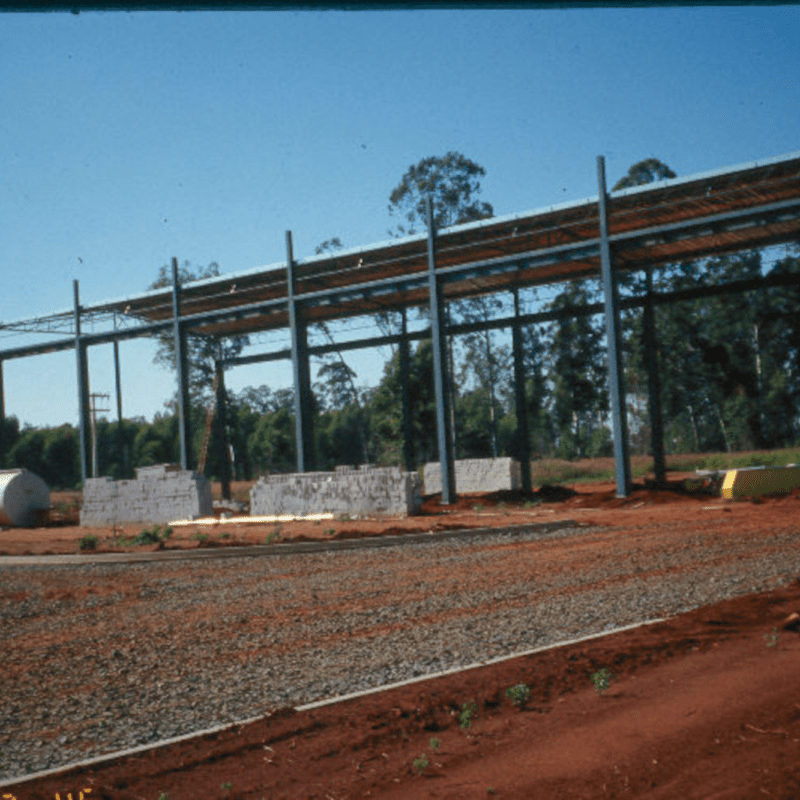
Português:
Início da construção do primeiro prédio do campus do LNLS., destinado à fabricação de ímãs.
English:
Beginning of the construction of the first building of the LNLS campus, intended for magnet manufacturing.
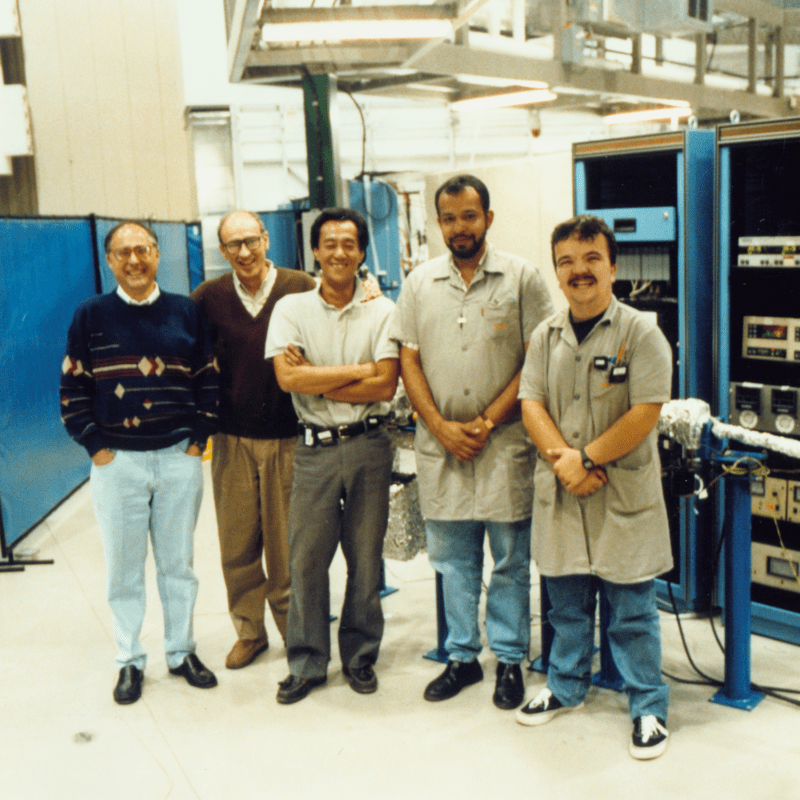
Português:
É concluída a montagem da primeira linha de luz, instalada no Center for Advanced Microstructures and Devices (CAMD), na Universidade da Louisiana (EUA). Na foto, Cylon Gonçalves da Silva, Antonio Rubens Britto de Castro, Eize Morikawa, José Geraldo Pacheco e Paulo de Tarso.
English:
The assembly of the first beamline is completed, installed at the Center for Advanced Microstructures and Devices (CAMD), at the University of Louisiana (USA). In the photo, Cylon Gonçalves da Silva, Antonio Rubens Britto de Castro, Eize Morikawa, José Geraldo Pacheco and Paulo de Tarso.
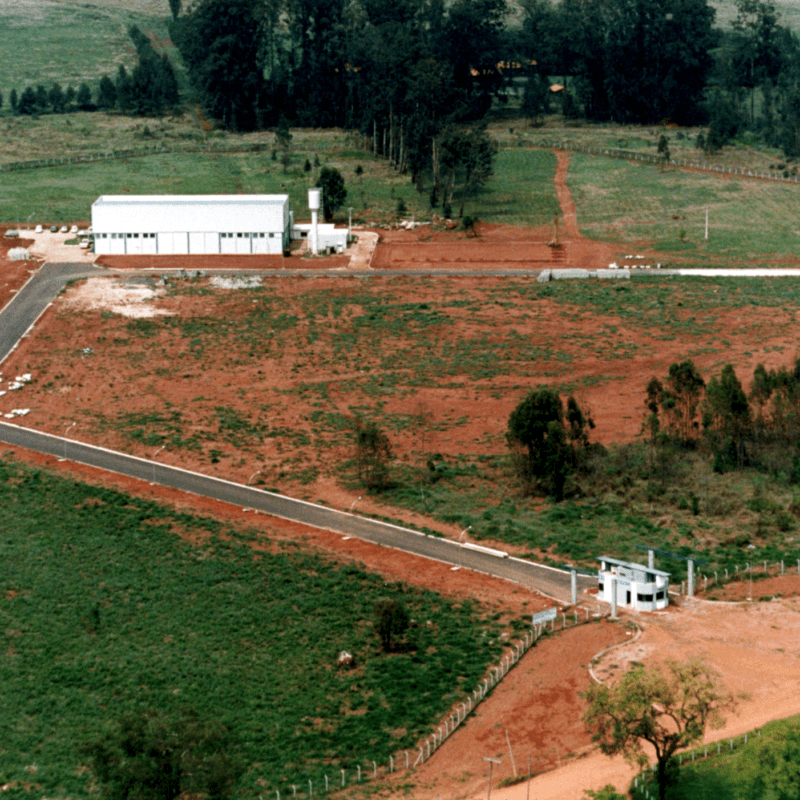
Português:
Vista aérea parcial do campus, com o prédio da fábrica de ímãs já pronto.
English:
Partial aerial view of the campus, with the magnet factory building already completed.
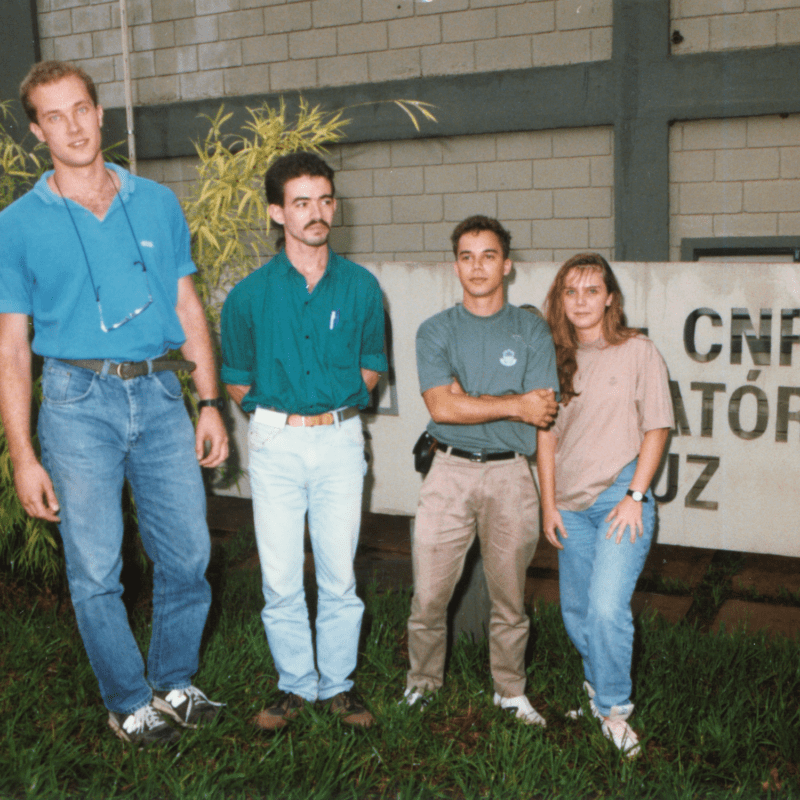
Português:
Turma de estudantes que participaram da primeira edição do Programa Bolsas de Verão: Jorge Jovicich, Bernado Affonso Ferreria, Germano Pinto Guedes e Daniela Zanchet
English:
Class of students who participated in the first edition of the Summer Scholarship Program: Jorge Jovicich, Bernado Affonso Ferreria, Germano Pinto Guedes and Daniela Zanchet
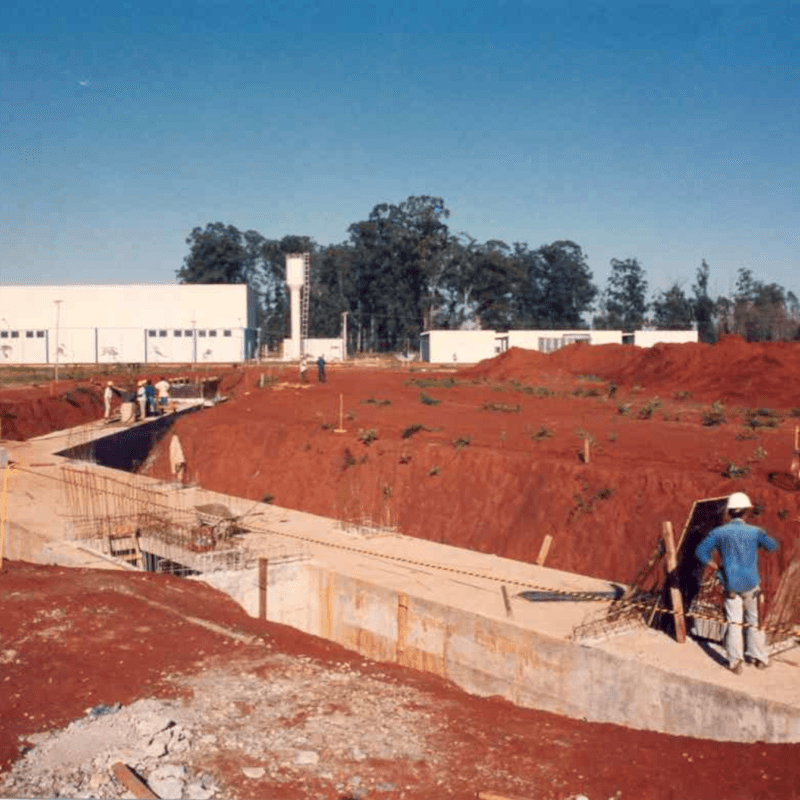
Português:
Construção da fase subterrânea do prédio da fonte de luz síncrotron. O túnel mostrado na foto abriga o canhão de elétrons e o Linac, acelerador linear onde os elétrons começam a ser acelerados.
English:
Construction of the underground phase of the building for the synchrotron light source. The tunnel shown in the photo houses the electron gun and the Linac, linear accelerator where the electrons start to be accelerated.
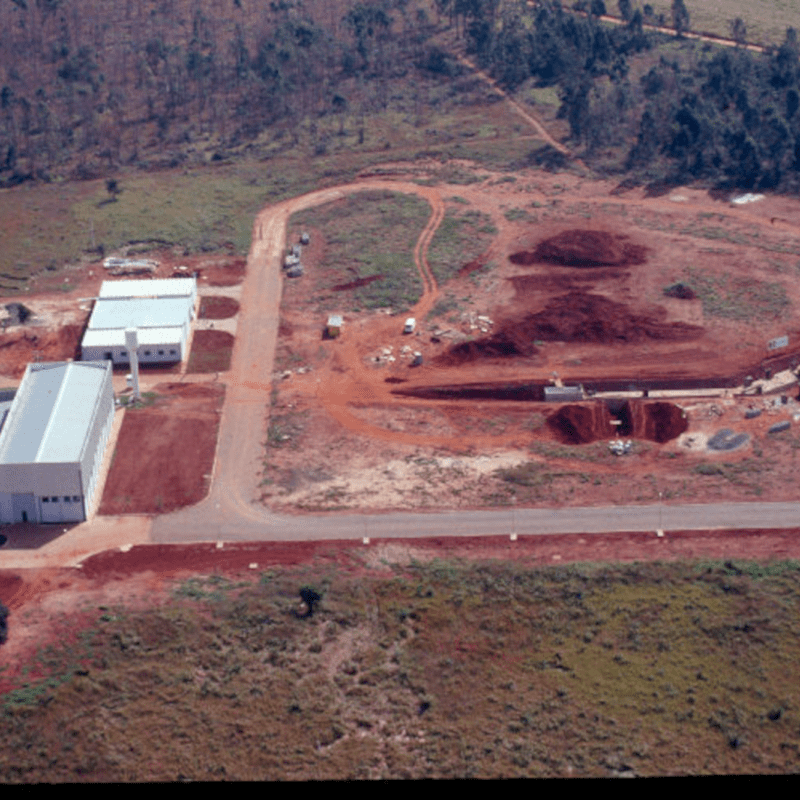
Português:
Vista aérea do campus do LNLS, em que podem ser vistos o prédio de fabricação de ímãs e a oficina mecânica. Nestes prédios seriam fabricados os componentes da futura fonte de luz.
English:
Aerial view of the LNLS campus, where the magnet manufacturing building and machine shop can be seen. In these buildings the components of the future light source would be manufactured.
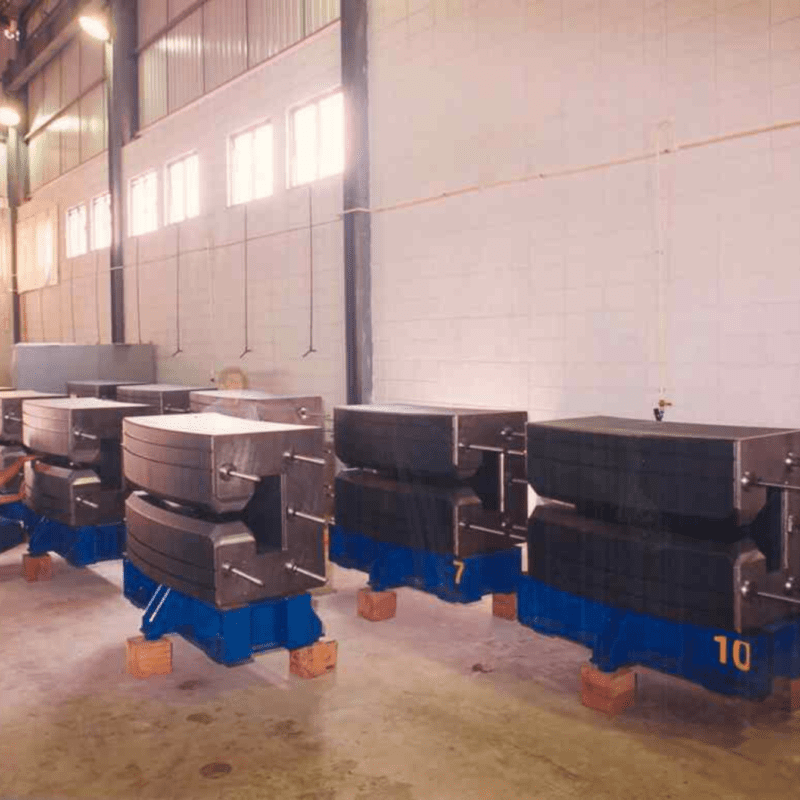
Português:
Linha de montagem dos ímãs dipolos do anel de armazenamento da futura fonte de luz síncrotron. Todos os ímãs e grande parte dos demais componentes do acelerador foram fabricados internamente, pela própria equipe do LNLS.
English:
Assembly line for the dipole magnets of the storage ring of the future synchrotron light source. All magnets and most of the other components of the accelerator were manufactured internally by the LNLS team.
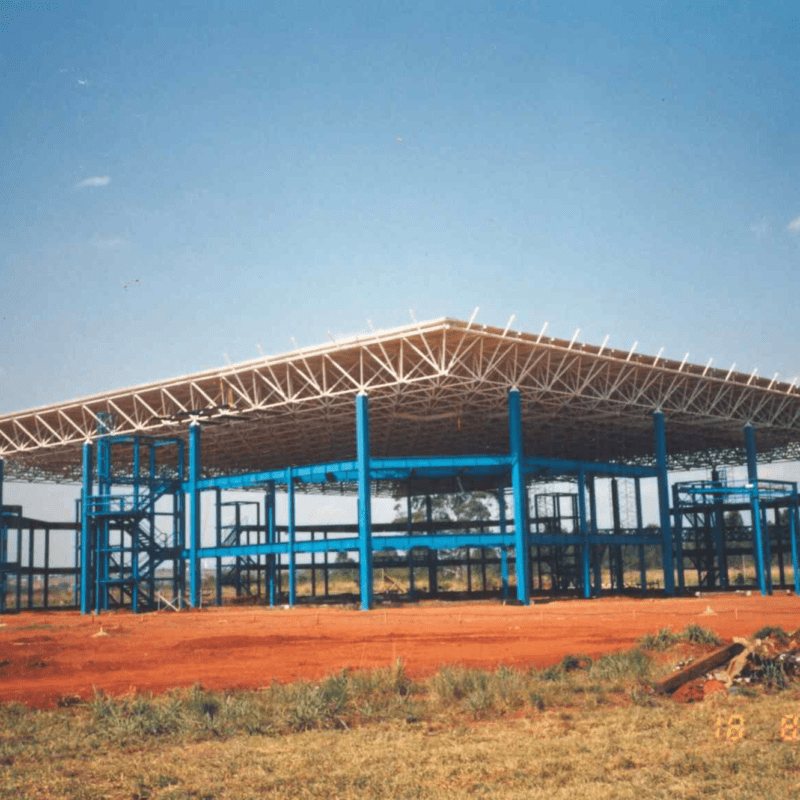
Português:
Em 18 de agosto, o prédio da fonte de luz síncrotron começava a ganhar forma.
English:
On August 18, the synchrotron light source building began to take shape.

Português:
Em outubro, a construção do prédio da fonte de luz síncrotron é concluída e a equipe do LNLS começa a se transferir para o local para o início da instalação.
English:
In October, the construction of the synchrotron light source building is completed and the LNLS team starts moving to the site for the beginning of the assembly.
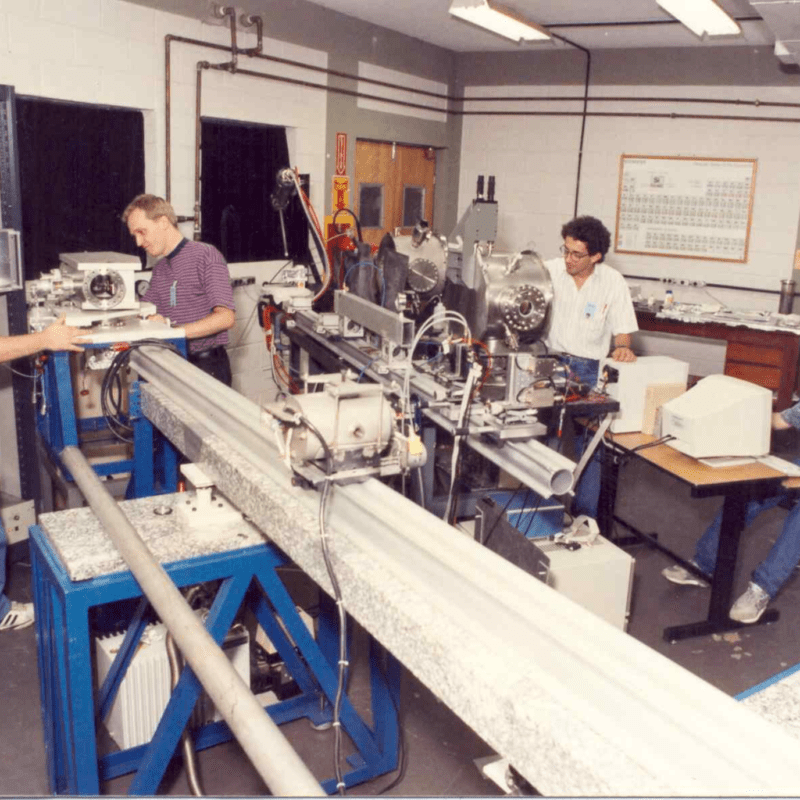
Português:
Desenvolvimento de instrumentação científica para as linhas de luz.
English:
Development of scientific instrumentation for the beamlines.

Português:
Linac, acelerador linear de elétrons, em versão com energia de 100 MeV, instalado no subterrâneo do prédio da fonte de luz síncrotron.
English:
100 MeV linear electron accelerator installed in a tunnel underneath the synchrotron light source building.
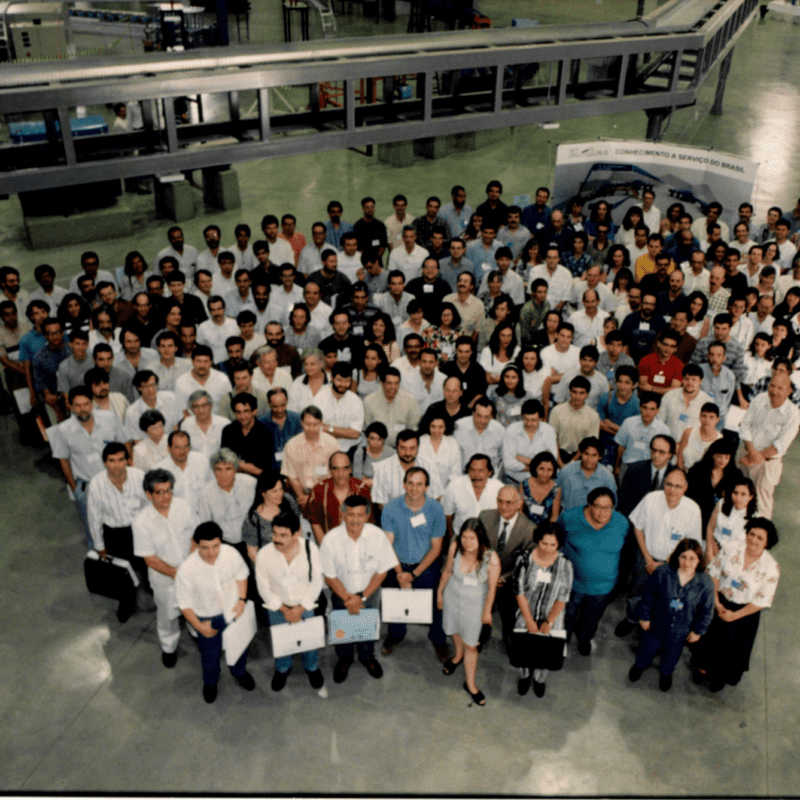
Português:
Em novembro acontece a primeira Reunião Anual de Usuários realizada no campus definitivo. Nessa reunião, é anunciado que graças à alta qualidade dos magnetos produzidos pela equipe do LNLS, a energia dos elétrons seria elevada de 1,15 GeV para 1,37 GeV, aumentando o fluxo da radiação síncrotron produzida.
English:
In November, the Annual Users Meeting is held on the new campus for the first time. At this meeting it is announced that thanks to the high quality of the magnets produced by the LNLS team, the electron energy would be raised from 1.15 GeV to 1.37 GeV, increasing the flux of synchrotron radiation produced.
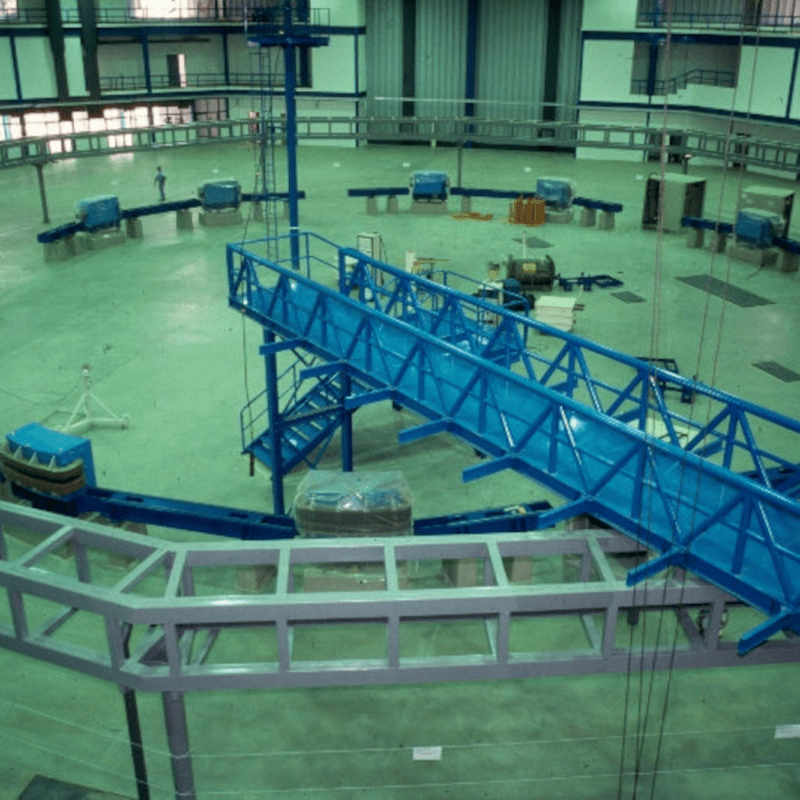
Português:
Visão interna do prédio da fonte de luz síncrotron com os dipolos já assentados.
English:
Internal view of the synchrotron light source building with the dipoles already in place.

Português:
Visão interna do prédio da fonte de luz síncrotron com o anel de armazenamento de elétrons e início da blindagem com blocos de concreto.
English:
Internal view of the synchrotron light source building with the electron storage ring and the beginning of shielding with concrete blocks.
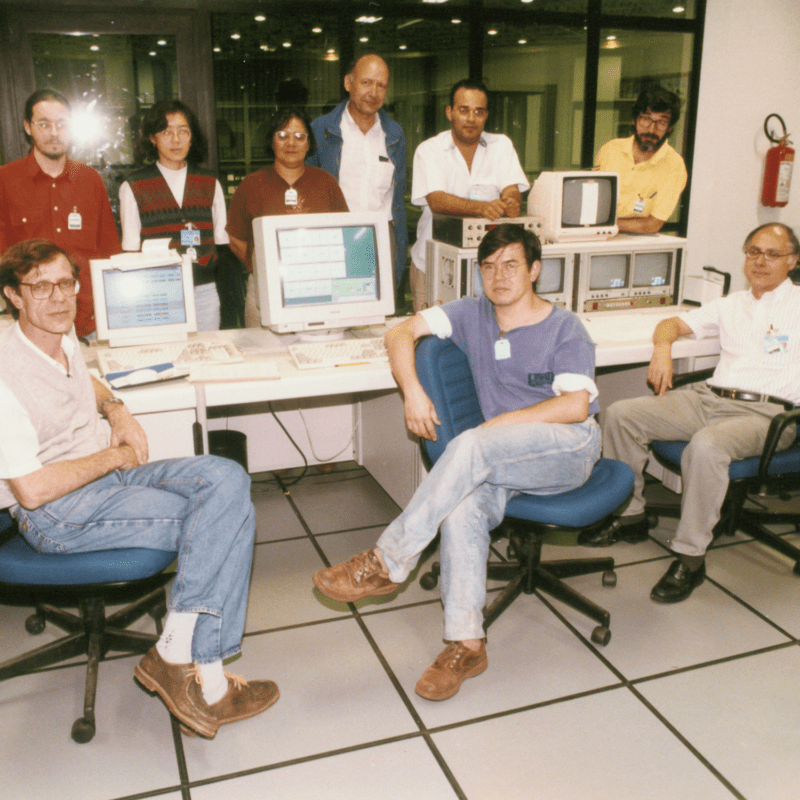
Português:
Ricardo Rodrigues, Ruy H. A. Farias e Cylon Gonçalves da Silva (à frente), Pedro Tavares, Liu Lin, Lúcia Jahnel, Aldo Craeivich, Fernando da Silva Rafael e Carlos Scorzato, na sala de controle da fonte de luz síncrotron, em 1996.
English:
Ricardo Rodrigues, Ruy H. A. Farias and Cylon Gonçalves da Silva (front), Pedro Tavares, Liu Lin, Lúcia Jahnel, Aldo Craeivich, Fernando da Silva Rafael and Carlos Scorzato, in the synchrotron light source control room, in 1996.
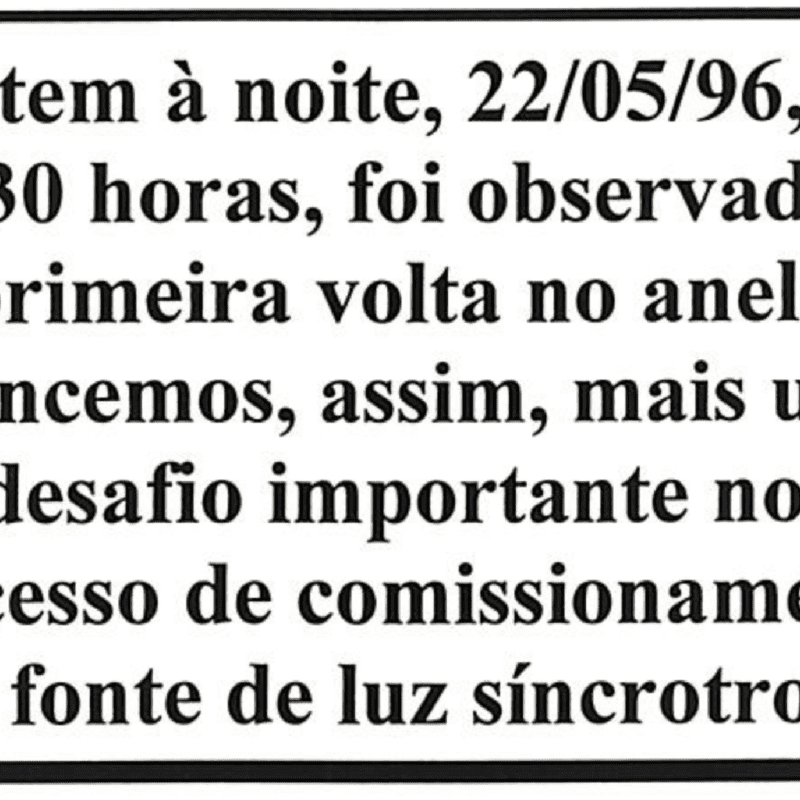
Português:
Em maio acontece a primeira volta de elétrons no anel de armazenamento e no segundo semestre as primeiras linhas de luz começam a ser instaladas. Em outubro, é observada pela primeira vez a luz síncrotron em uma das linhas de luz.
English:
May the first return of electrons in the storage ring takes place and in the second half of the year the first beamlines start to be installed. In October, synchrotron light is observed for the first time on one of the beamlines.

Português:
No segundo semestre as primeiras linhas de luz começam a ser instaladas. Em outubro, é observada pela primeira vez a luz síncrotron em uma das linhas de luz. A foto mostra a observação da luz síncrotron durante a 7ª Reunião Anual de Usuários, em novembro do mesmo ano.
English:
In the second semester, the first beamlines begin to be installed. In October, the synchrotron light is observed for the first time on one of the beamlines. The photo shows the observation of the synchrotron light during the 7th Annual Users Meeting, in November.

Português:
Em 1º de julho a fonte de luz síncrotron UVX é aberta à comunidade de ciência e tecnologia. Na época, a fonte contava com sete linhas de luz: estrutura fina da absorção de raios X (XAFS1), espectroscopia de raios X moles (SXS), espalhamento de raios X a baixos ângulos (SAXS1), difração de raios X (XRD1), cristalografia de proteínas (MX1) e duas linhas de espectroscopia no ultravioleta (TGM e SGM).
English:
On July 1 the UVX synchrotron light source is opened to the science and technology community. At the time, the source had seven beamlines: X-ray absorption fine structure (XAFS1), soft X-ray spectroscopy (SXS), small angle X-ray scattering (SAXS1), X-ray diffraction (XRD1), protein crystallography (MX1) and two ultraviolet spectroscopy beamlines (TGM and SGM).
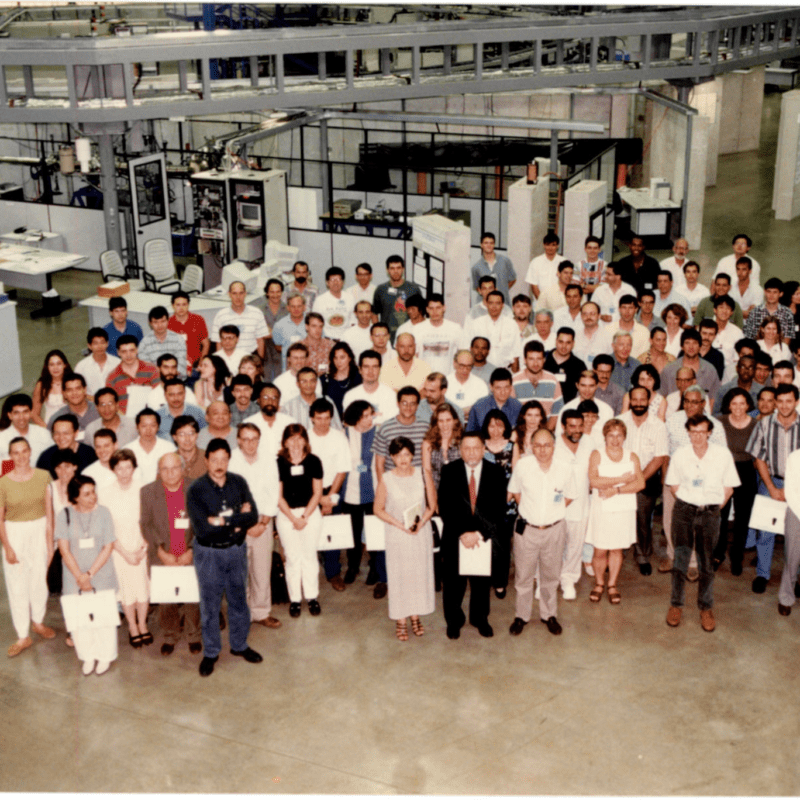
Português:
Em novembro acontece a oitava reunião anual de usuários (RAU), a primeira após o início das operações da fonte de luz. Na época, o evento já contava com comunicações científicas que incluíam resultados experimentais obtidos no LNLS.
English:
In November, the eighth annual users' meeting (RAU) takes place, the first after the beginning of the light source operations. At that time, the meeting already had scientific communications that included experimental results obtained at LNLS.
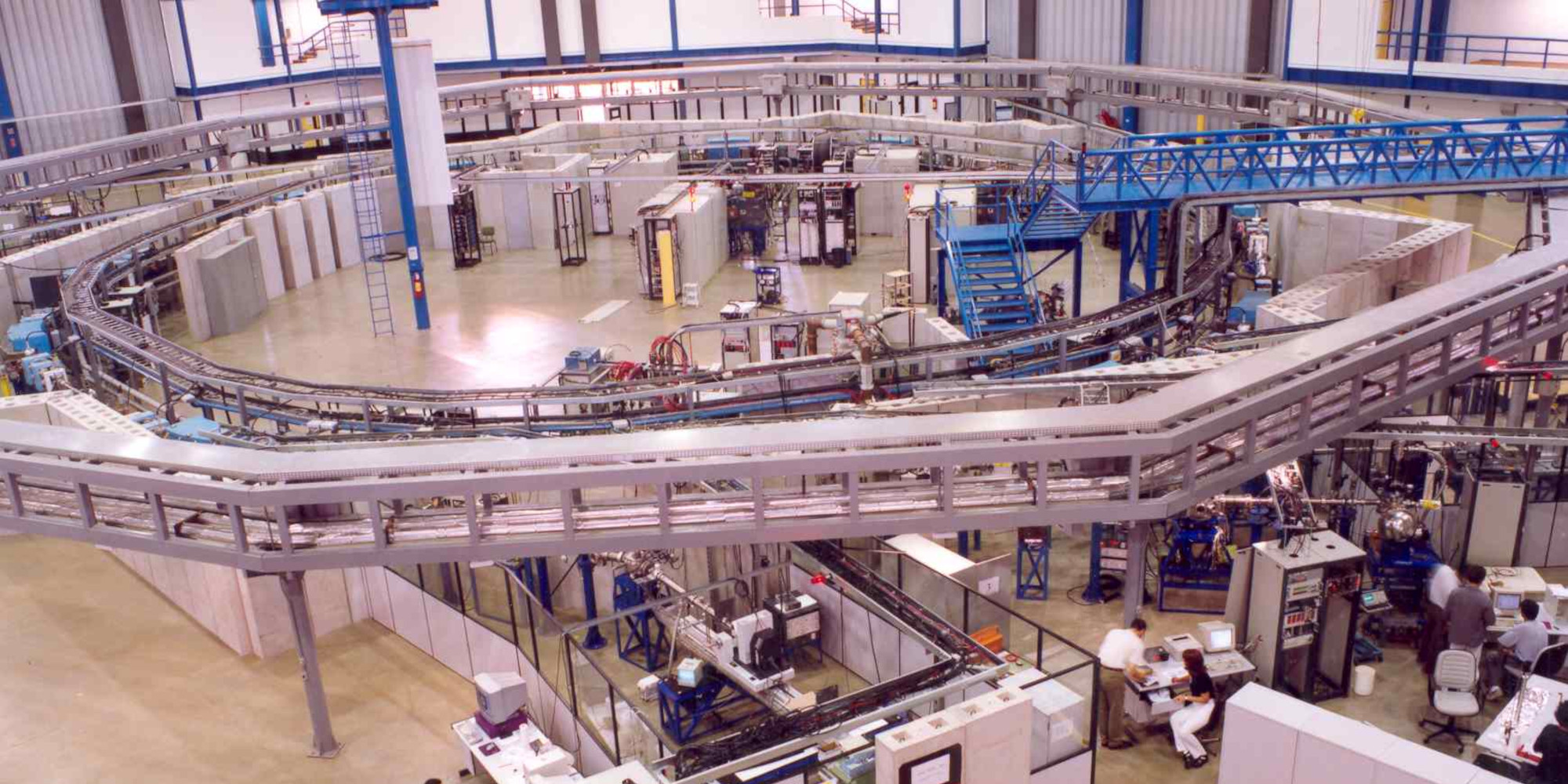
On July 1, 1997, the UVX synchrotron light source is opened to the science and technology community. At the time, the source had seven beamlines.
At the same time, the Laboratory ceases to exist as a CNPq institute and becomes the first Brazilian scientific institution to be managed by a private non-profit organization with the creation of the Brazilian Association of Synchrotron Light Technology (ABTLuS).
The association is responsible for the management of the Brazilian Synchrotron Light Laboratory, under a Management Contract signed with CNPq and the Ministry of Science and Technology (MCT) on January 29, 1998.
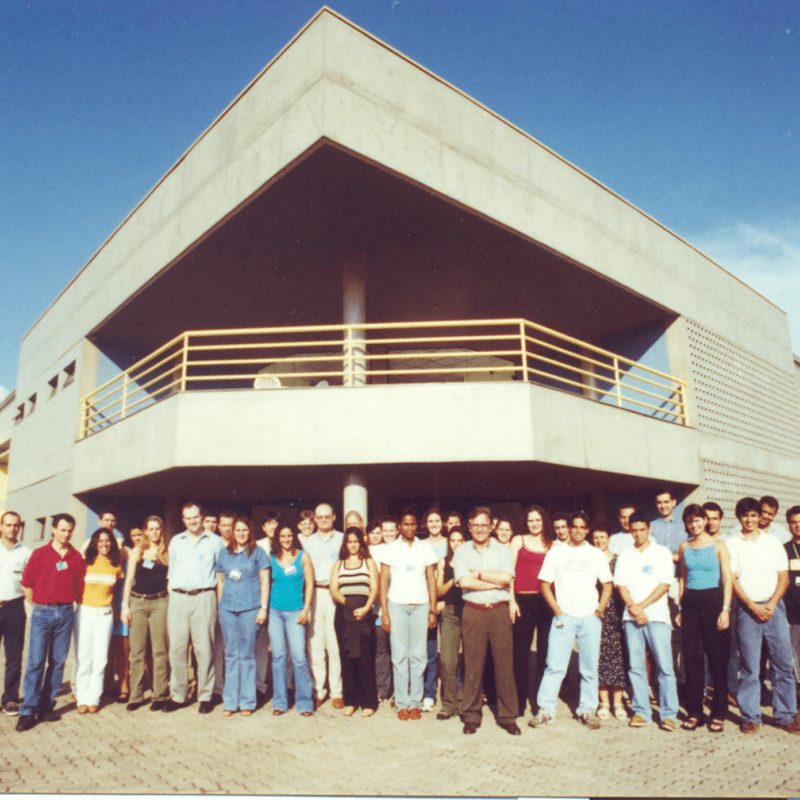
Português:
Em 1998 é iniciada a implantação do Centro de Biologia Molecular e Estrutural (CeBiME), como um centro de pesquisa associado ao LNLS. Foto mostra primeira equipe do CeBiME no ano 2000.
English:
In 1998, the Center for Molecular and Structural Biology (CeBiME) was established as a research center associated to the LNLS. Picture shows the first CeBiME team in the year 2000.
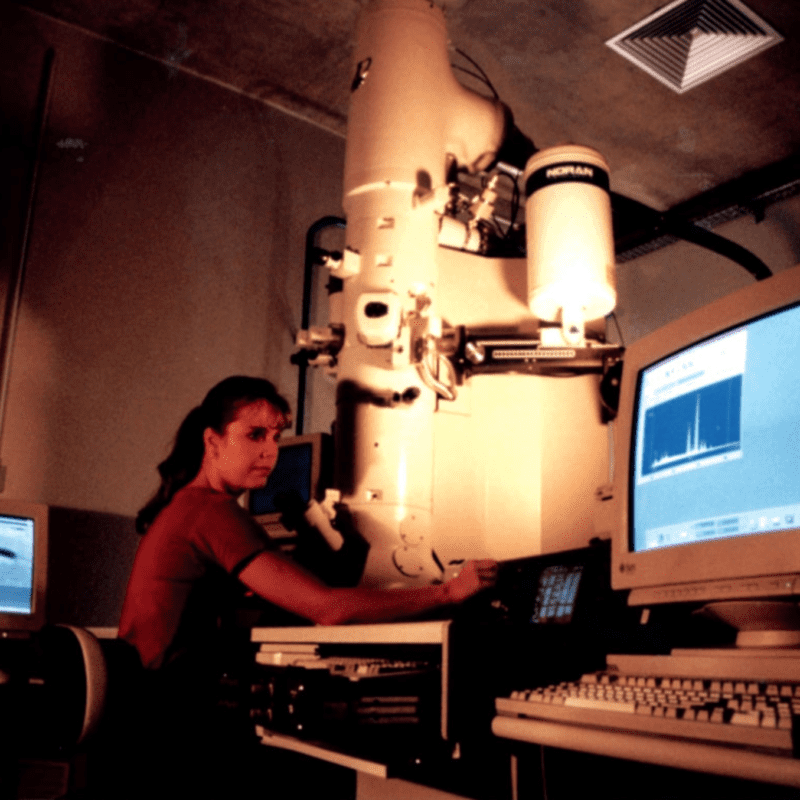
Português:
Em 22 de fevereiro o Laboratório de Microscopia Eletrônica (LME) é aberto a usuários, com o objetivo de atender áreas emergentes de pesquisa.
English:
On February 22 the Electronic Microscopy Laboratory (LME) is opened to users, aiming to serve emerging areas of research.
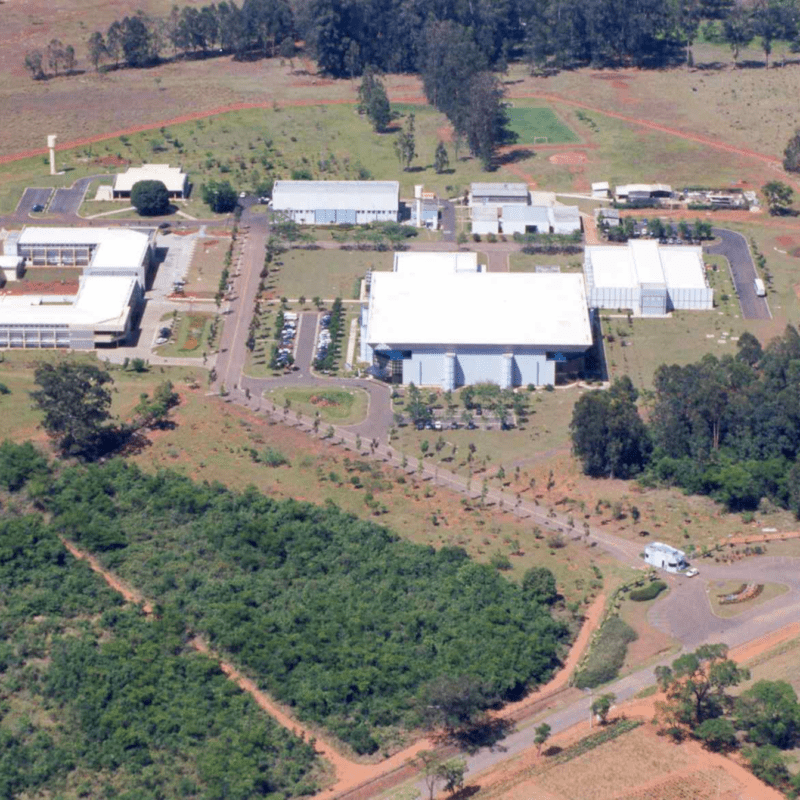
Português:
Vista aérea do campus, já com Alojamento de Visitantes, Prédio da Administração, Refeitório, prédio destinado ao CeBIME, entre outros.
English:
Aerial view of the campus, with Guesthouse, Administration Building, Cafeteria, CeBIME building, among others.
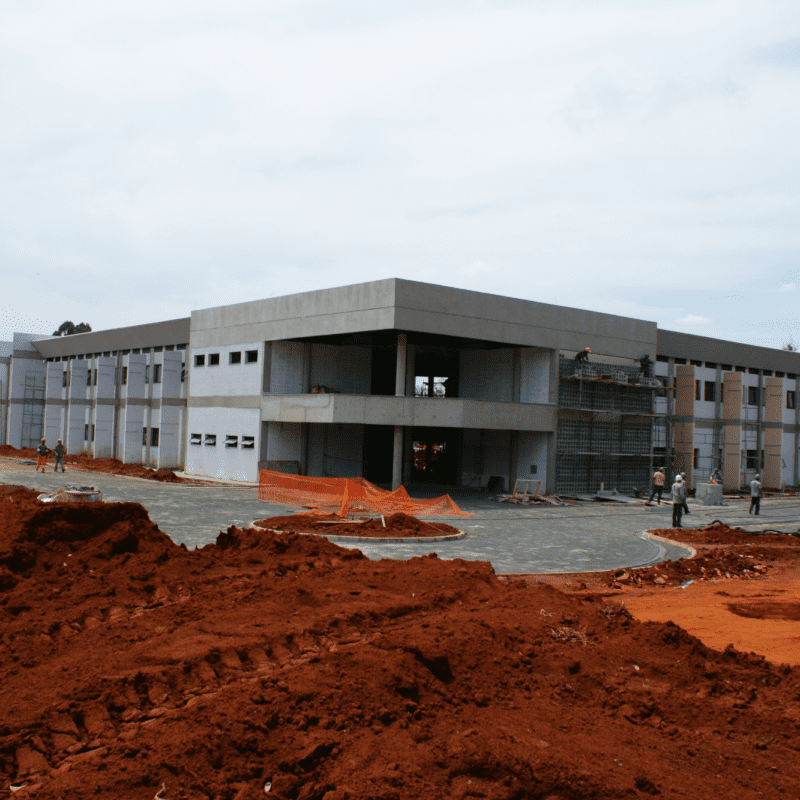
Português:
Em dezembro, por decisão do Conselho de Administração, a pedido do Ministério da Ciência e Tecnologia (MCT), a ABTLuS passa a incubar o Centro de Ciência e Tecnologia do Bioetanol (CTBE). Foto mostra
English:
In December, by decision of the Board of Directors, at the request of the Ministry of Science and Technology (MCT), ABTLuS starts incubating the Bioethanol Science and Technology Center (CTBE).
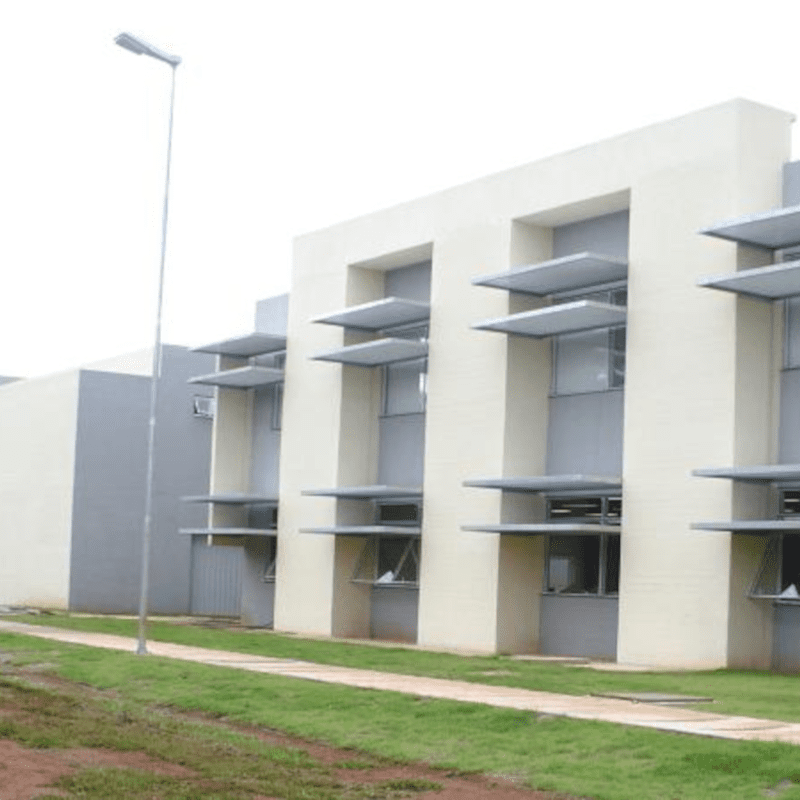
Português:
Em 4 de março, é criado o Centro de Nanociência e Nanotecnologia Cesar Lattes – C2Nano, vinculado ao LNLS, com a inauguração do prédio especialmente concebido para abrigar microscópios eletrônicos de alto desempenho.
English:
On March 4, the Cesar Lattes Center for Nanoscience and Nanotechnology - C2Nano is created, associated to LNLS, with the inauguration of the building specially designed to house high performance electron microscopes.
Between its inauguration and decommissioning, the UVX synchrotron light source received several upgrades, with the objective of improving the quality of the synchrotron light produced. In addition, new experimental stations were opened over the years according to the needs of the scientific community, bringing the total to 18 beamlines in 2014.

Português:
Vista aérea do campus, já com alojamento, prédio da administração, refeitório e outros. Ainda, novas estações de pesquisa são abertas na fonte de luz síncrotron. A linha de luz XRF dedicada à fluorescência de raios X é comissionada em 1998, e a linha de luz XDR2 de difração de raios X é aberta em 1999.
English:
Aerial view of the campus, with guesthouse, administration Building, cafeteria, and others. Also, new research stations are opened in the synchrotron light source. The XRF beamline dedicated to X-ray fluorescence is commissioned in 1998, and the XDR2 beamline for X-ray diffraction is opened in 1999.
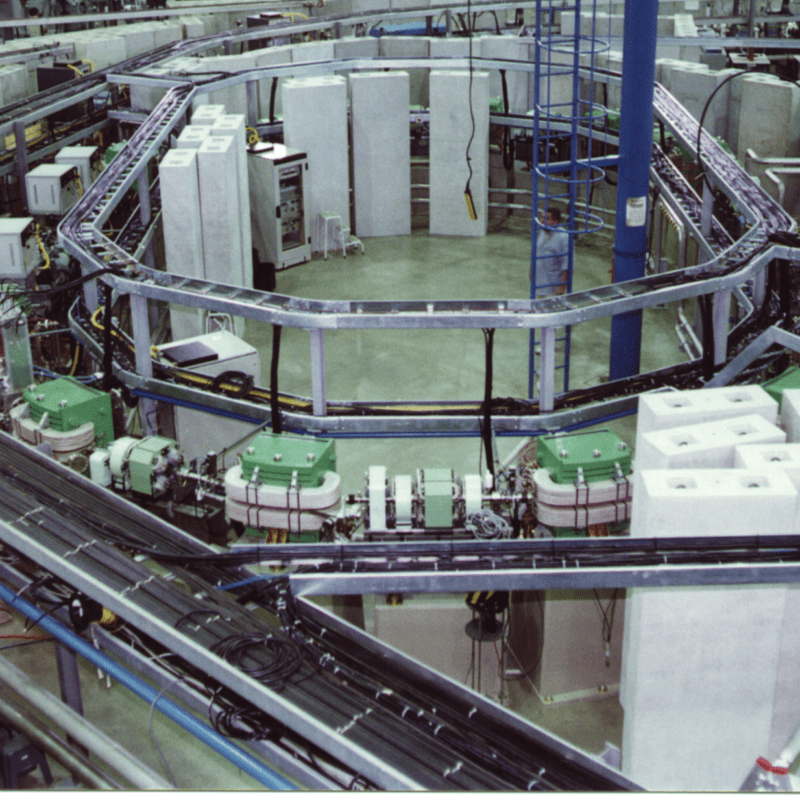
Português:
Instalação do acelerador injetor de 500 MeV, que permitiu aumentar a produção de luz síncrotron pela fonte de luz.
English:
Installation of the 500 MeV injector accelerator, which allowed the light source to increase its synchrotron light output.
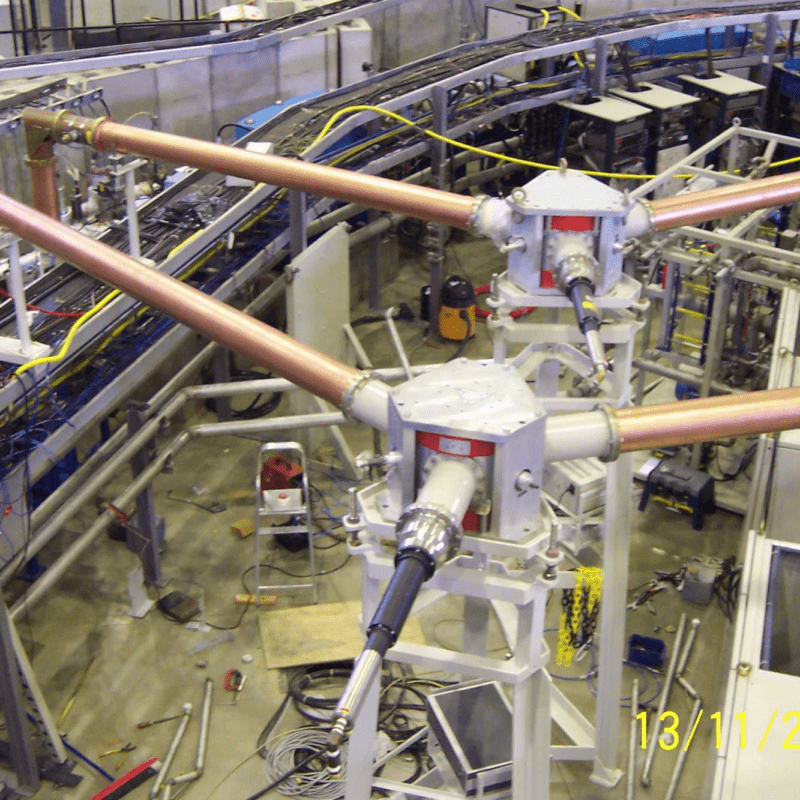
Português:
Atualização do sistema de radiofrequência, responsável por aumentar e repor a energia dos elétrons circulantes no acelerador, para que ele pudesse comportar a instalação de dispositivos de inserção, equipamentos que proporcionam uma maior produção de luz síncrotron.
English:
Upgrading the radiofrequency system, responsible for increasing and replenishing the energy of the electrons circulating in the accelerator, so that it could support the installation of insertion devices, equipment that provides greater production of synchrotron light.
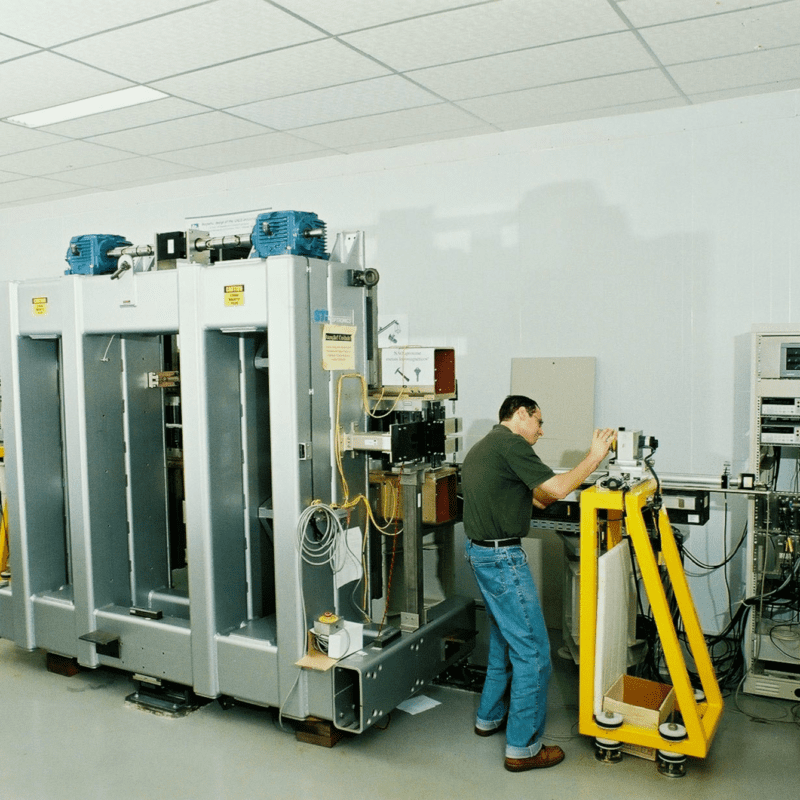
Português:
É adquirido o primeiro dispositivo de inserção para o UVX, um Wiggler híbrido multipolar de 2 Tesla. O dispositivo é instalado no anel de armazenamento durante o ano seguinte.
English:
The first UVX insertion device is purchased, a 2 Tesla hybrid multipole Wiggler. The device is installed in the storage ring the following year.
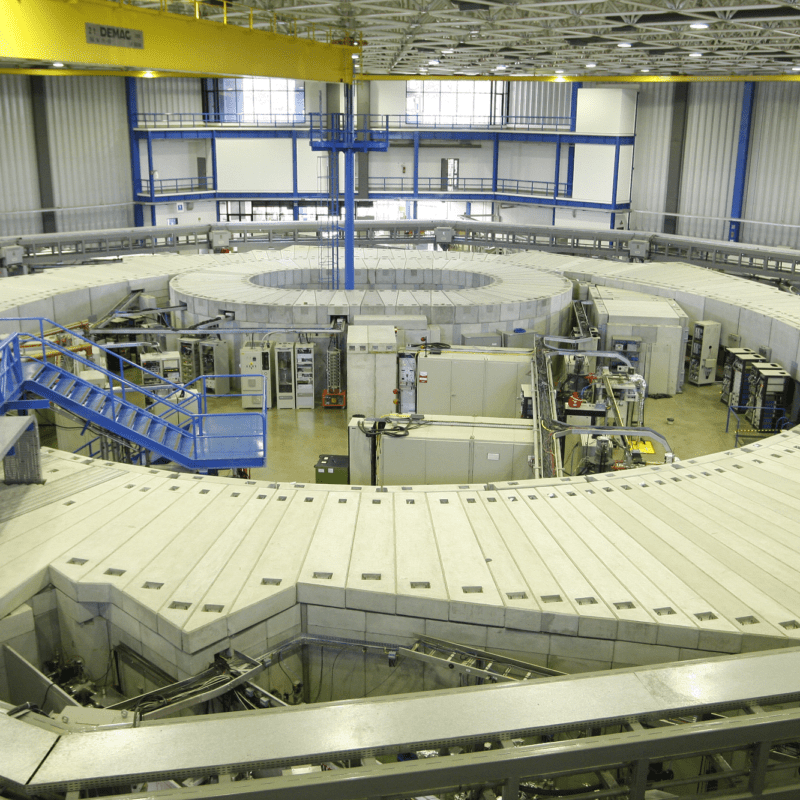
Português:
É concluída a implementação do novo sistema de blindagem e proteção radiológica da fonte de luz síncrotron, melhorando as condições de trabalho dos usuários da fonte de luz síncrotron.
English:
The implementation of the new shielding and radiological protection system of the synchrotron light source is completed, improving the working conditions of the synchrotron light source users.
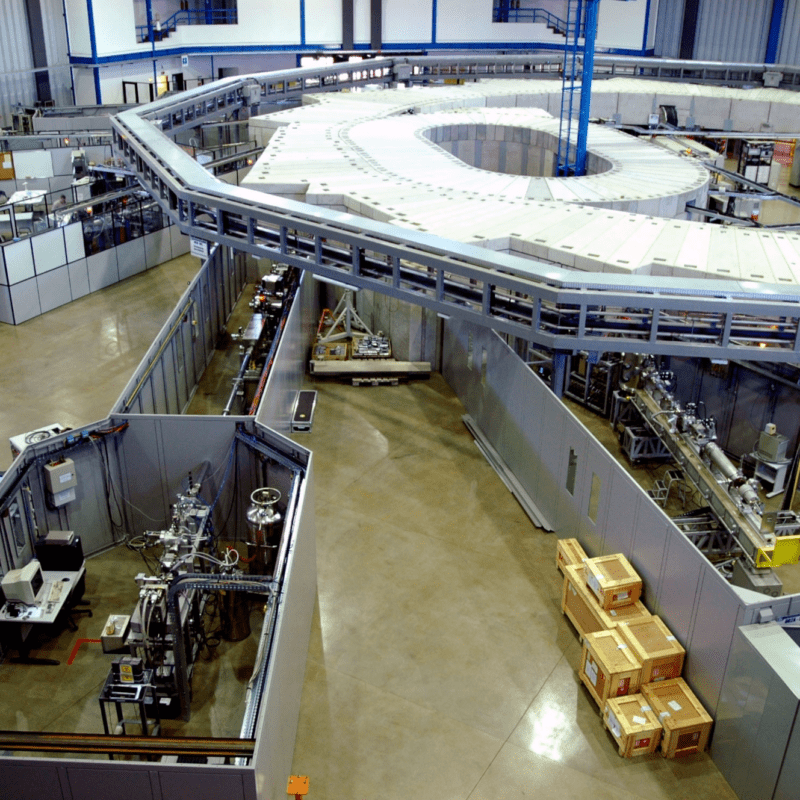
Português:
Novas estações experimentais foram construídas ao longo dos anos de acordo com as necessidades da comunidade científica: DXAS, dedicada à espectroscopia por absorção dispersiva de raios X, em 2002; XPD, dedicada a difração de raios X em policristais, em 2004; e MX2 (mostrada na foto), dedicada à cristalografia de proteínas, baseada no primeiro dispositivo de inserção da fonte de luz síncrotron, em 2006.
English:
New experimental stations were over the years according to the needs of the scientific community: DXAS, dedicated to dispersive X-ray absorption spectroscopy, in 2002; XPD, dedicated to X-ray diffraction in polycrystals, in 2004; and MX2 (shown in the picture), dedicated to protein crystallography, based on the first insertion device of the synchrotron light source, in 2006.
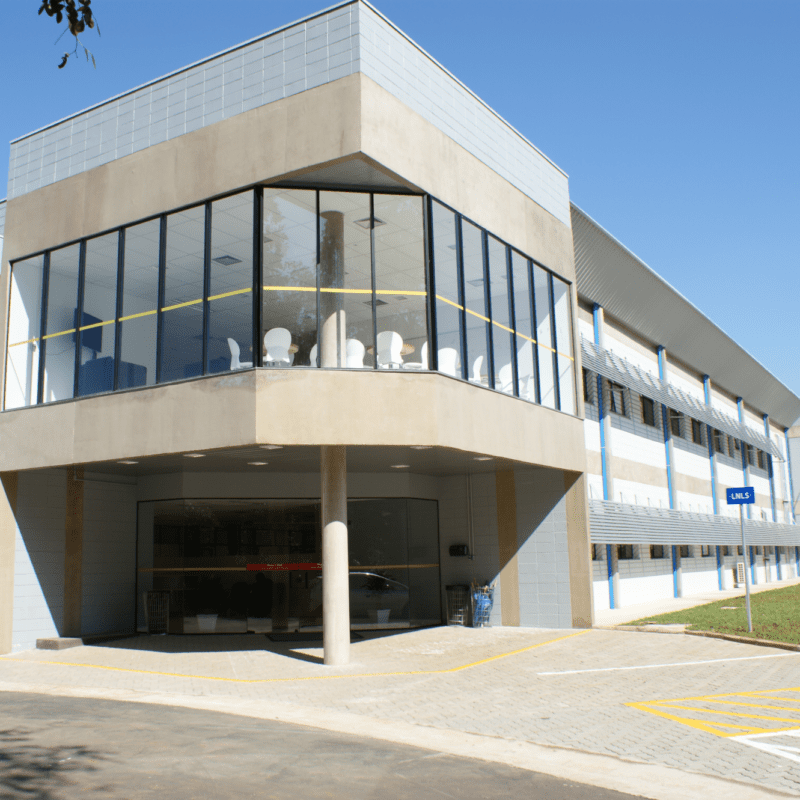
Português:
Juntamente com investimentos na modernização das linhas de luz, tem início a construção de um novo prédio, anexo ao prédio da fonte de luz síncrotron, o que facilitou o acesso dos funcionários e usuários às instalações.
English:
Along with investments in the modernization of the beamlines, the construction of a new LNLS administrative building, attached to the building of the synchrotron light source, which facilitated the access of employees and users to the facilities.

Português:
Novas estações experimentais foram construídas ao longo dos anos de acordo com as necessidades da comunidade científica: SAXS2, dedicada ao espalhamento de raios X a baixos ângulos, em 2006; XAFS2, dedicada à absorção e fluorescência de raios X, em 2007; e PGM (mostrada na foto), dedicada a espectroscopia de raios X, baseada no segundo dispositivo de inserção da fonte de luz síncrotron, em 2011.
English:
New experimental stations were over the years according to the needs of the scientific community: SAXS2, dedicated to small angle X-ray scattering, in 2006; XAFS2, dedicated to X-ray absorption and fluorescence, in 2007; and PGM (shown in the picture), dedicated to X-ray spectroscopy, based on the second insertion device of the synchrotron light source, in 2011.
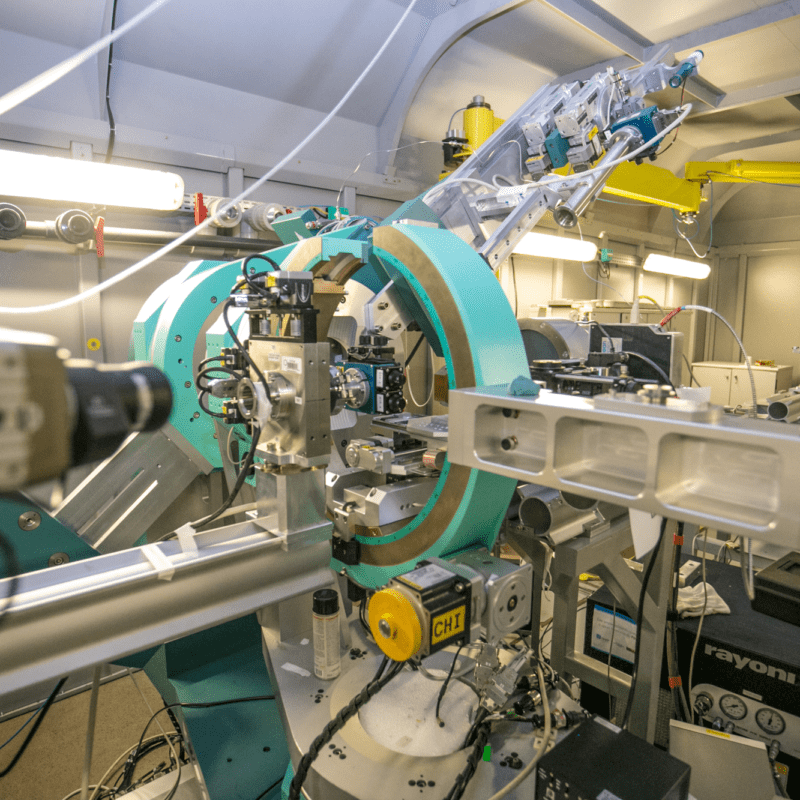
Português:
Novas estações experimentais foram construídas ao longo dos anos de acordo com as necessidades da comunidade científica: IMX, dedicada a tomografia de raios X, em 2012; XDS (mostrada na foto), dedicada a difração e espectroscopia de raios X, baseada no terceiro dispositivo de inserção da fonte de luz síncrotron, em 2013; e IR1, dedicada espectroscopia no infravermelho, em 2014.
English:
New experimental stations were over the years according to the needs of the scientific community: IMX, dedicated to X-ray tomography, in 2012; XDS (shown in the picture), dedicated to X-ray diffraction and spectroscopy, based on the third insertion device of the synchrotron light source, in 2013; and IR1, dedicated to infrared spectroscopy, in 2014.
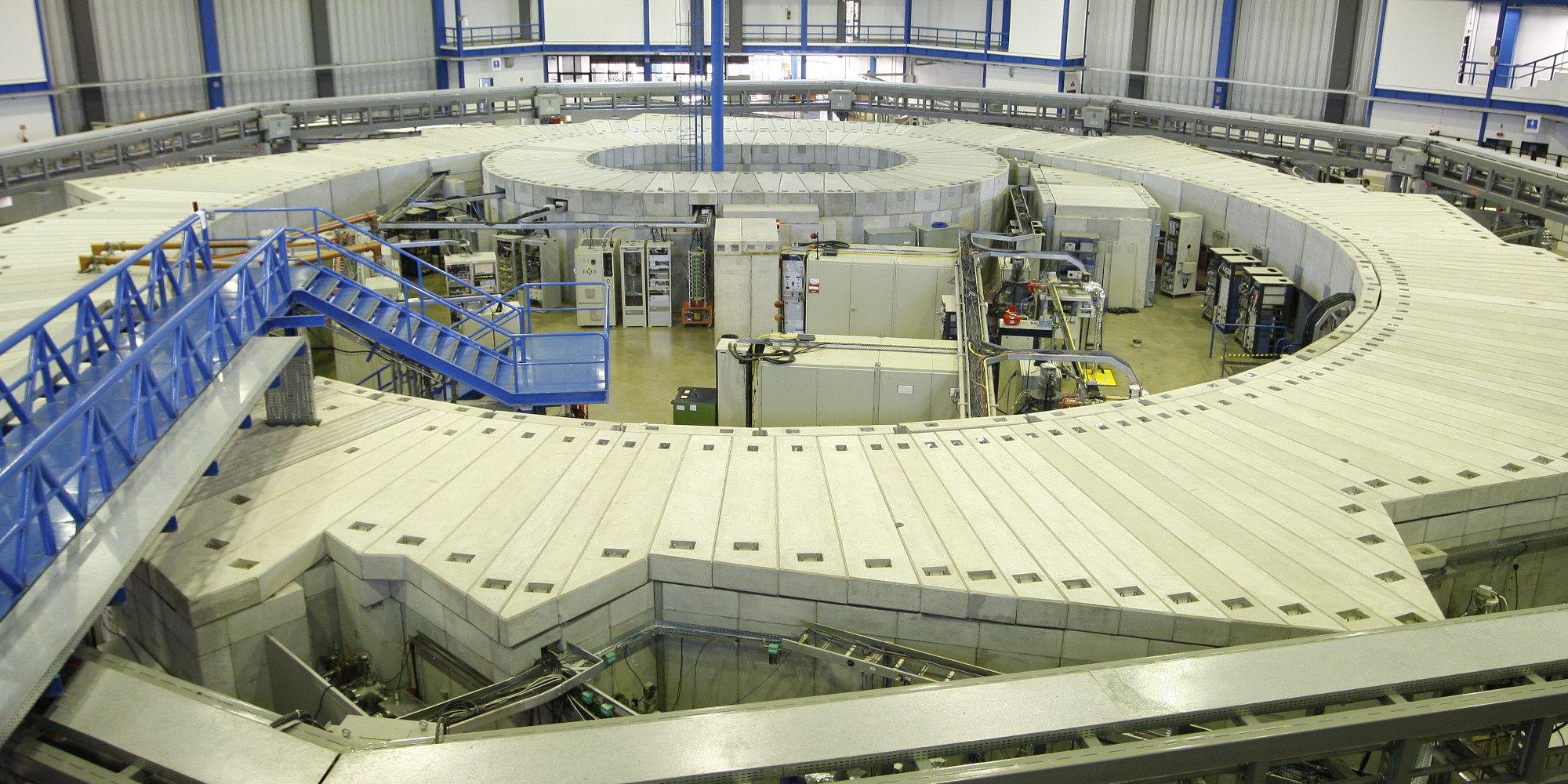
In 2009, the campus takes the name of Brazilian Center for Research in Energy and Materials (CNPEM), and the research units previously under LNLS become themselves National Laboratories. Thus, CNPEM now includes three National Laboratories: the Brazilian Synchrotron Light Laboratory (LNLS), the Brazilian Biosciences National Laboratory (LNBio), and the Brazilian Bioethanol Science and Technology National Laboratory (CTBE), which in 2019 would be renamed Brazilian Biorenewables National Laboratory (LNBR), with the diversification of its activity.
Later, in 2011, from three other units under LNLS – the Electron Microscopy Laboratory, the Tunneling and Atomic Force Microscopy Laboratory and the Microfabrication Laboratory – the Brazilian Nanotechnology National Laboratory (LNNano) is created and becomes part of CNPEM.
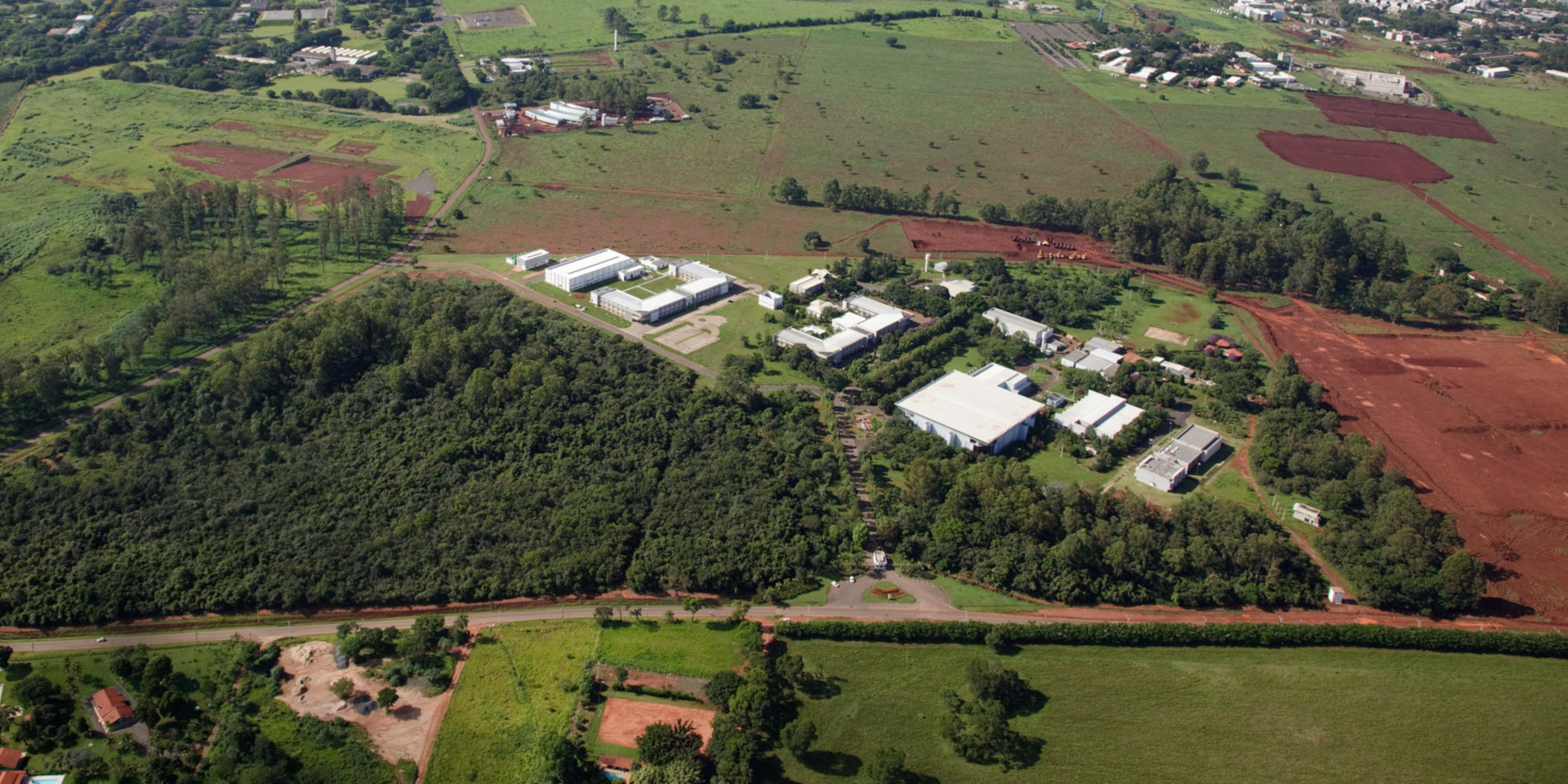
Aerial view of the campus in 2011 with its four National Laboratories, now brought together under the name National Centre for Research in Energy and Materials (CNPEM).
About a decade after the inauguration of UVX, users already highlighted the need to start studies on a new low-emission synchrotron light source. In 2006, the recommendation is made in the ABTLuS master plan for the creation of a task force that would initiate studies on this new source, provisionally called LNLS-2. A report is sent to the MCT and, with the approval and allocation of the first financial resources, the studies continue.
In 2009 events are held with users to discuss the characteristics of the new synchrotron light source. Electron energy is defined at 3 GeV, and some of the essential parameters for the development of the first project. In 2010, after an internal contest, the LNLS-2 project is renamed Sirius, the brightest star in the night sky. There are advances in the definitions of the project and the search begins for an appropriate area for the installation of the new light source.
In 2012, Sirius’ first project, previously classified as a third-generation synchrotron light source, is presented to an international committee of experts, which recommends a more advanced equipment. Sirius is redesigned and the project indicates the possibility of reaching the lowest emission in the world in its energy class, a pioneer among the synchrotron light sources of the fourth generation, together with the Swedish MAX-IV source.
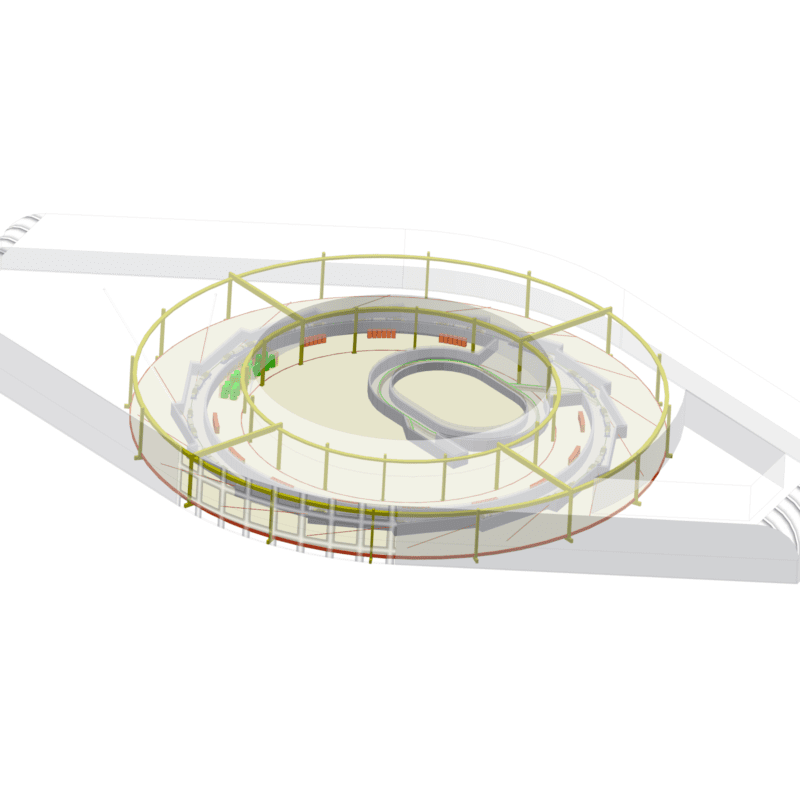
Português:
Em 2008, tem-se o início dos estudos preliminares para construção de uma nova fonte de luz síncrotron para o LNLS, provisoriamente chamada LNLS-2. O primeiro conceito é entregue ao Ministério da Ciência, Tecnologia e Inovação (MCTI) e a continuidade desses estudos é aprovada.
English:
In 2008, preliminary studies for the construction of a new synchrotron light source for LNLS are started, provisionally called LNLS-2. The first concept is delivered to the Ministry of Science, Technology and Innovation (MCTI) and the continuation of these studies is approved.
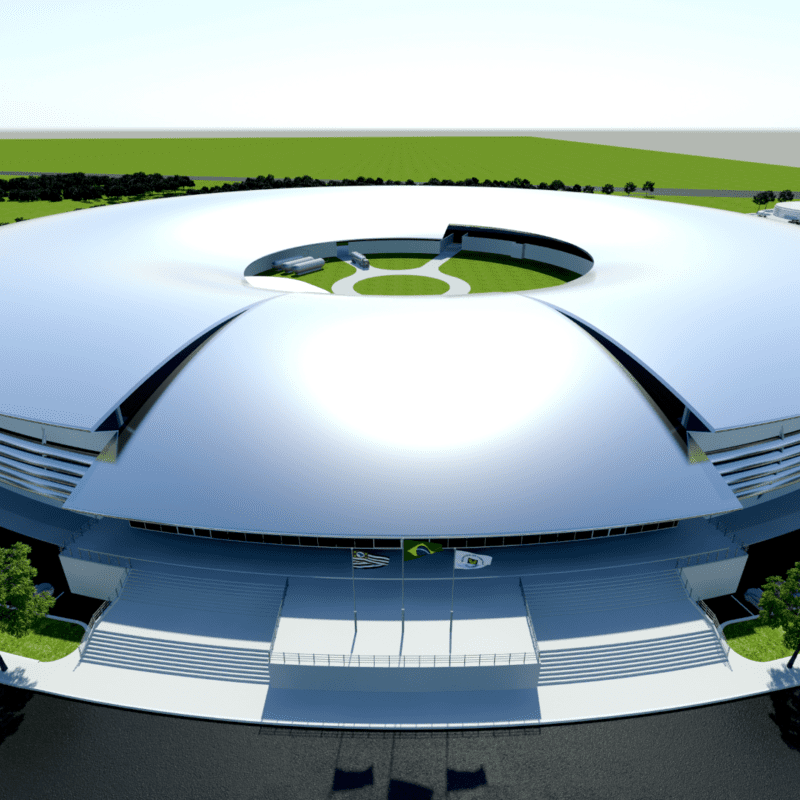
Português:
Concepção artística mostra como seria o prédio de Sirius, a nova fonte de luz síncrotron brasileira.
O projeto da época previa uma fonte de luz de terceira geração, que posteriormente foi redesenhada como um equipamento ainda mais moderno.
English:
Artistic conception shows how the building of Sirius, the new Brazilian synchrotron light source, would look like. The project at the time was for a third generation light source, which was later redesigned as an even more modern facility.
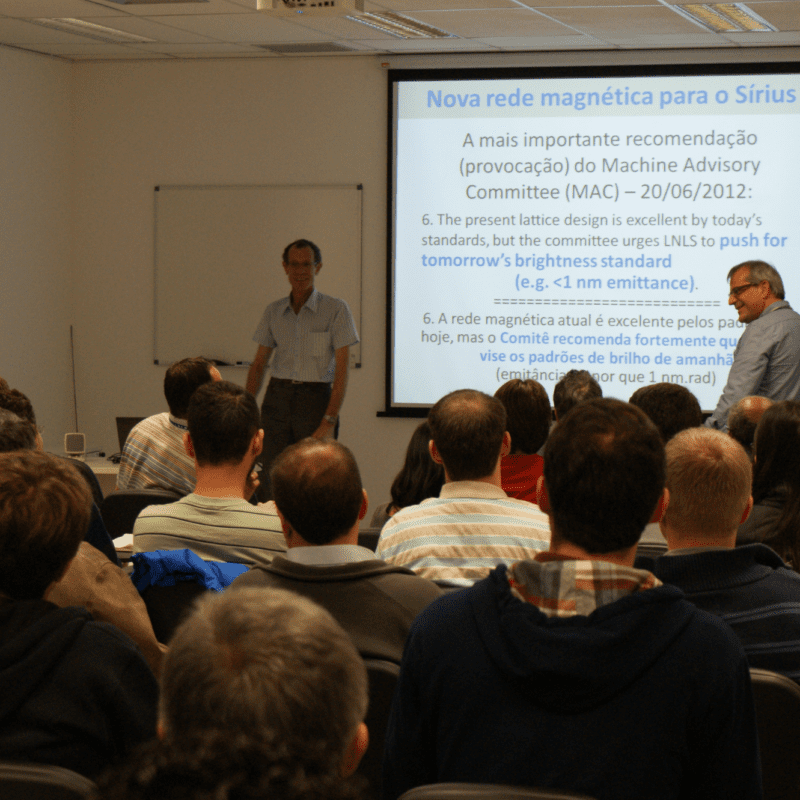
Português:
Em 2012, o primeiro projeto desenvolvido para o Sirius é apresentado a um comitê internacional de especialistas. Convidado para avaliar o projeto, o comitê então recomenda um equipamento mais ousado, que estivesse na vanguarda tecnológica e que pudesse se manter competitivo por muitos anos. O LNLS aceita o desafio proposto e concentra seus esforços no desenho de um novo projeto.
English:
In 2012, the first design developed for Sirius is presented to an international committee of experts. Invited to evaluate the project, the committee then recommends a bolder equipment that would be at the forefront of technology and that could remain competitive for many years. LNLS accepts the proposed challenge and concentrates its efforts on designing a new project.

Português:
Antes classificado como uma fonte de luz síncrotron de terceira geração, Sirius é redesenhado para que o equipamento produza a luz síncrotron mais brilhante do mundo em sua categoria de energia. Assim, Sirius passaria a ser considerado pioneiro da quarta geração, ao lado da fonte de luz MAX-IV, na Suécia. Tal aperfeiçoamento demanda revisões nos projetos das obras civis, dos aceleradores de elétrons e de suas estações experimentais.
English:
Previously classified as a third-generation synchrotron light source, Sirius is redesigned so that the equipment produces the brightest synchrotron light in the world in its energy category. Thus, Sirius would be considered a pioneer of the fourth generation, alongside the MAX-IV light source in Sweden. Such an improvement demands revisions in the designs of the construction works, the electron accelerators and their experimental stations.
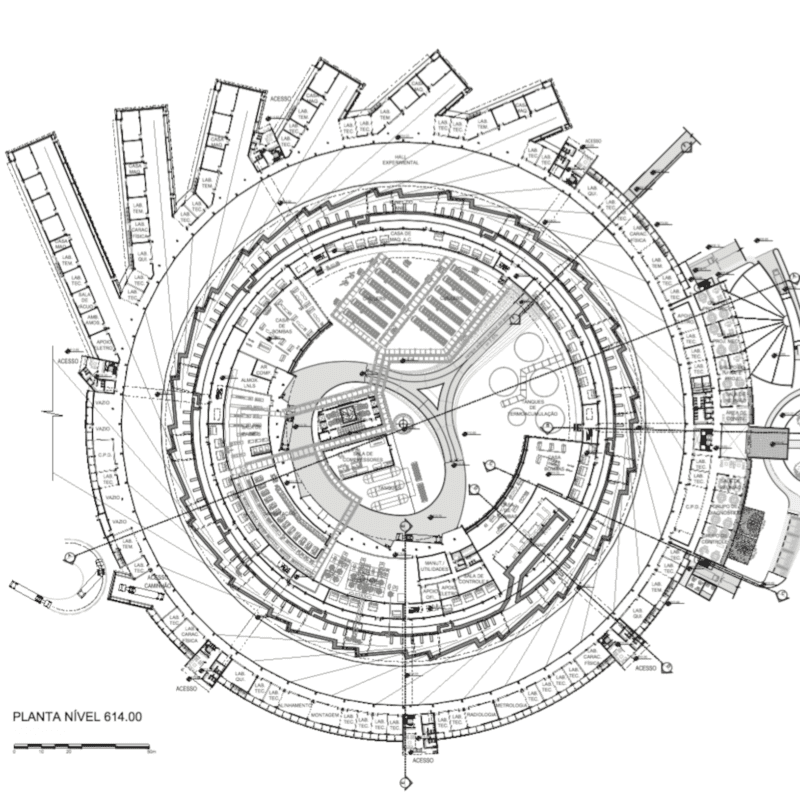
Português:
Planta do pavimento térreo.
English:
Ground floor plan.
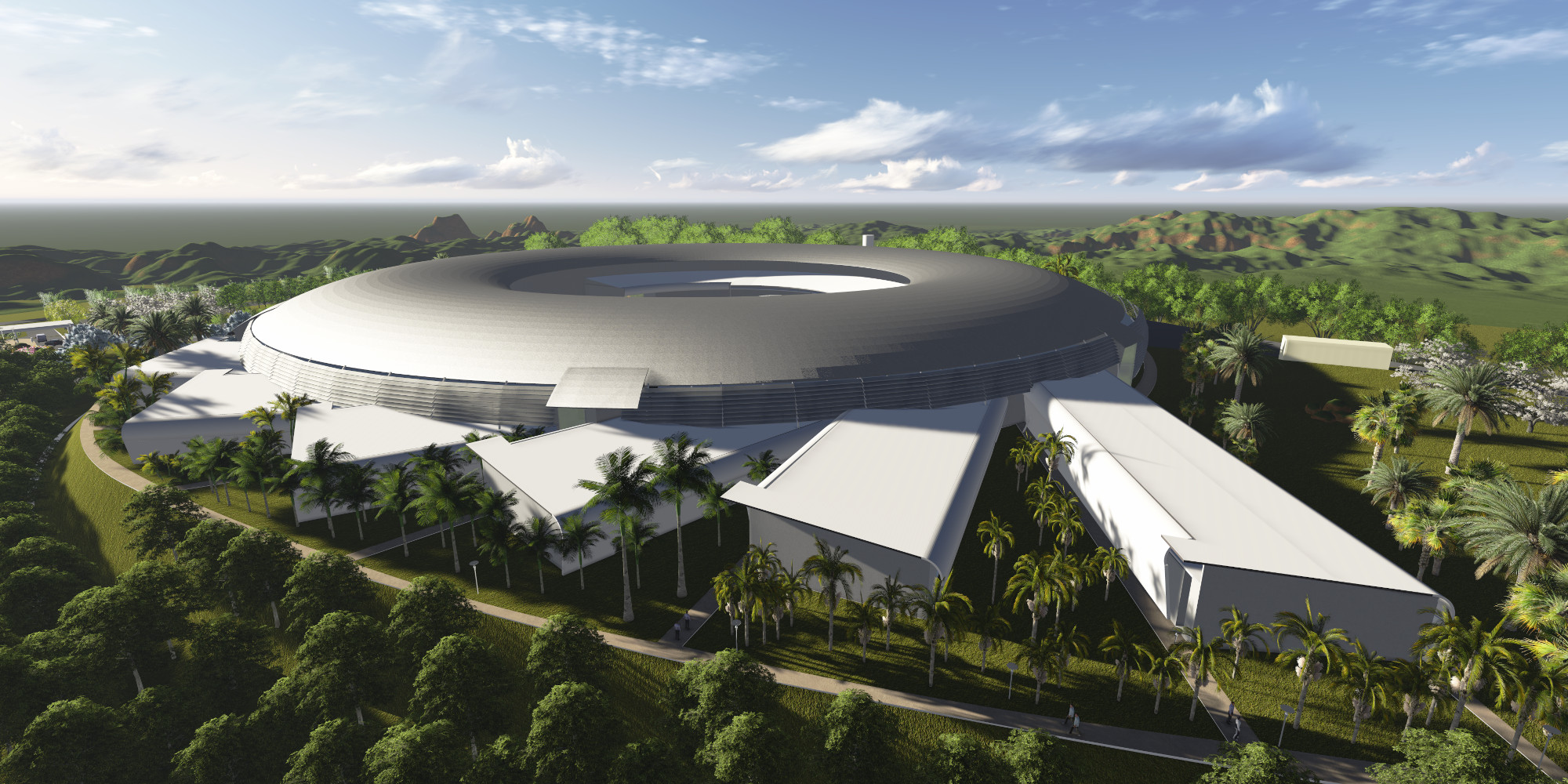
Previously classified as a third-generation synchrotron light source, Sirius is redesigned so that the equipment produces the brightest synchrotron light in the world in its energy category.
In 2013, an area of 150,000 square meters, adjacent to the CNPEM campus, is expropriated by the Government of the State of São Paulo to build Sirius. In the following year, earthworks are completed, and, on December 19, a ceremony for the laying of the cornerstone is organized. In January 2015, construction works begin. By the end of the year, almost 20 percent of construction works were completed.
In 2017, the construction works reaches 75% completion, with emphasis on the successful completion of the most critical phase of construction: the implementation of the special floor on which the accelerators and beamlines were subsequently installed.
Between 2017 and 2018, most of the manufacture of components of electron accelerators and Sirius beamlines is executed by Brazilian companies, based on the projects developed by the CNPEM teams.
In 2018, construction works are completed and the installation of equipment in the Sirius building begins.
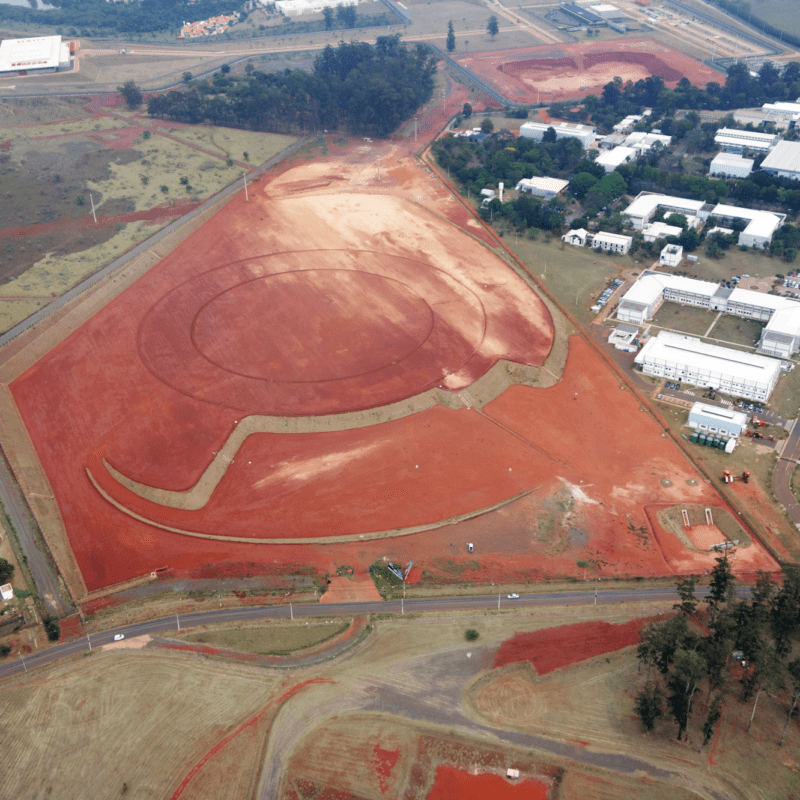
Português:
Conclui-se as obras de terraplenagem e o projeto executivo das edificações do Sirius.
English:
The earthworks and the executive project for the Sirius buildings are completed.
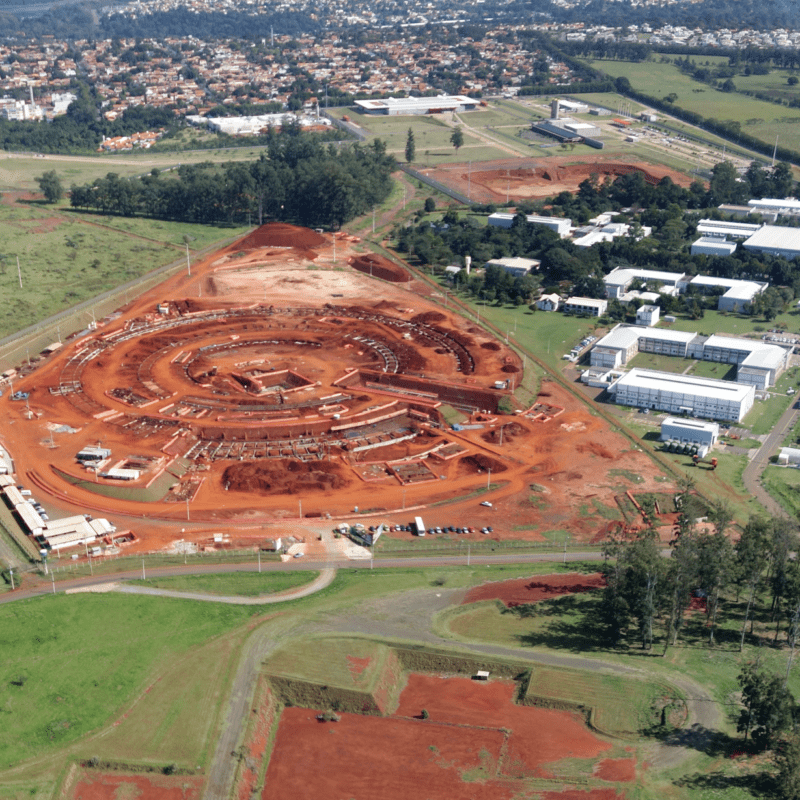
Português:
Em janeiro de 2015, com a conclusão da terraplenagem e do projeto executivo, são iniciadas as obras de construção.
English:
In January 2015, with the completion of the earthworks and the executive project, the construction works began.
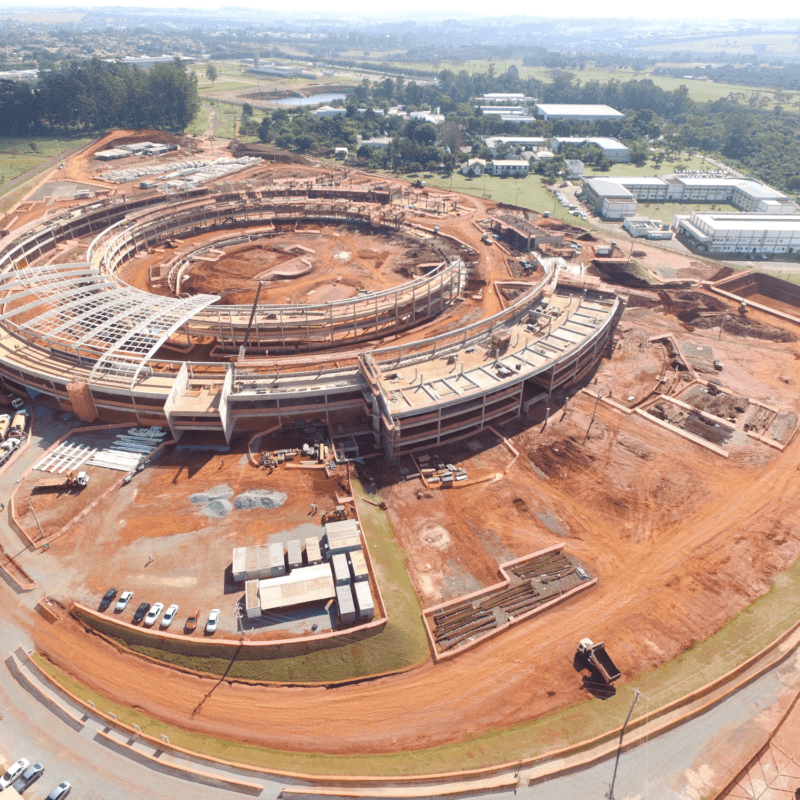
Português:
Ao final do ano, são completados quase 20% das obras do Sirius.
English:
At the end of the year, almost 20% of the Sirius construction works are completed.
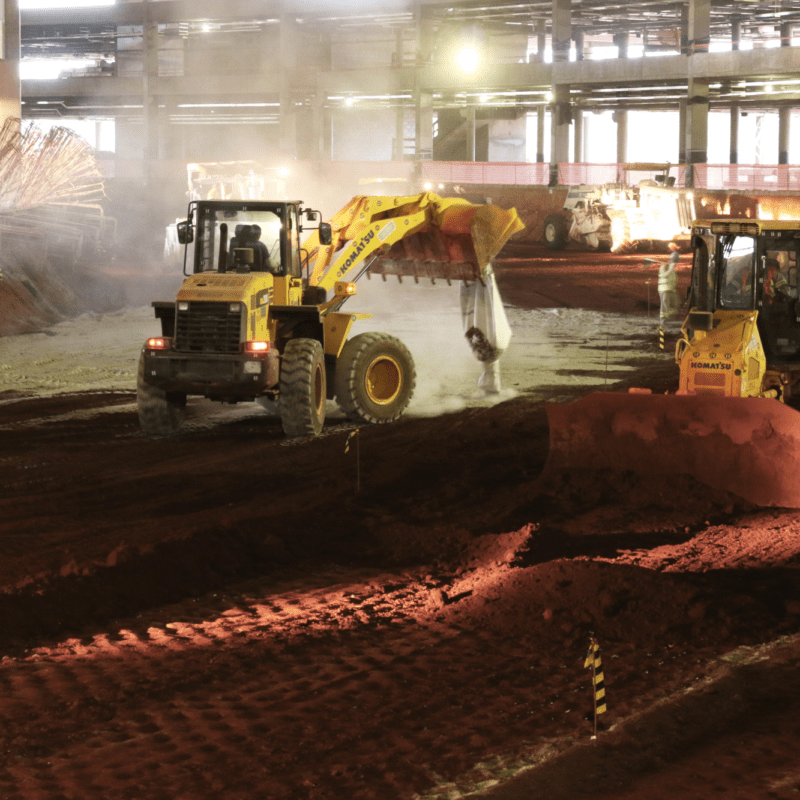
Português:
Recolocação do solo modificado na região do piso dos aceleradores, em abril de 2017.
English:
Replacement of the modified floor in the region of the accelerator floor, in April 2017.
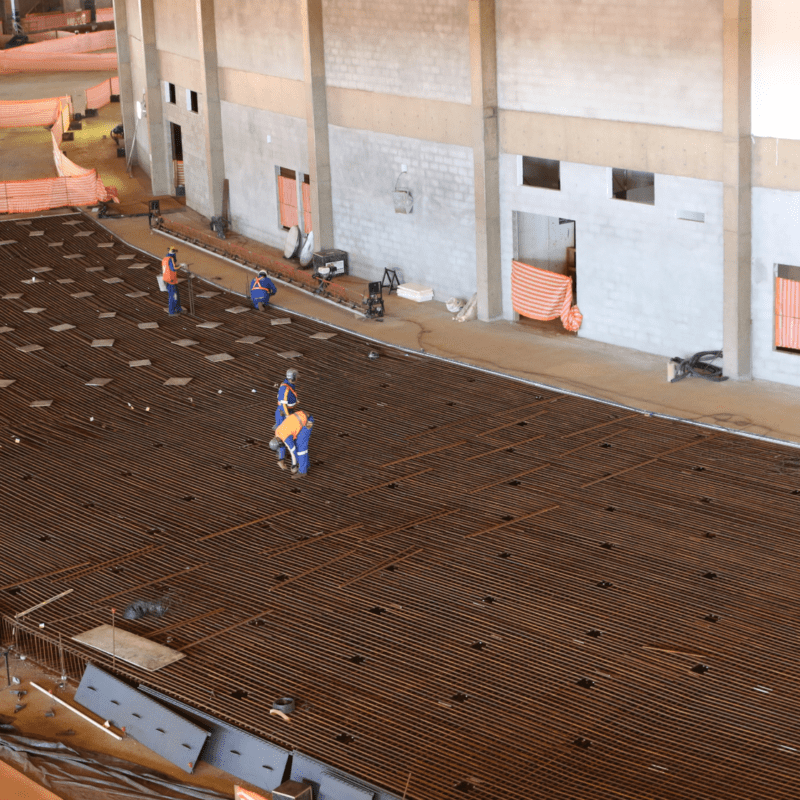
Português:
Operários trabalham na preparação da estrutura metálica para a concretagem do piso especial na região dos aceleradores do Sirius, em julho de 2017.
English:
Workers prepare the metal structure for the concreting of the special floor in the region of the Sirius accelerators, in July 2017.
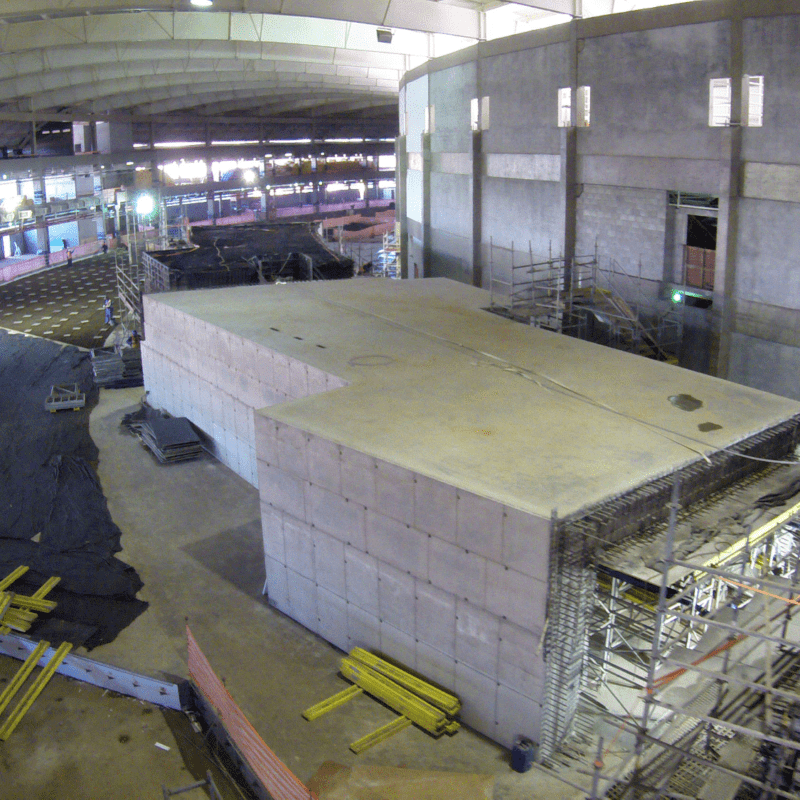
Português:
Construção do primeiro trecho da blindagem dos aceleradores.
English:
Construction of the first stretch of the shielding of the accelerators.
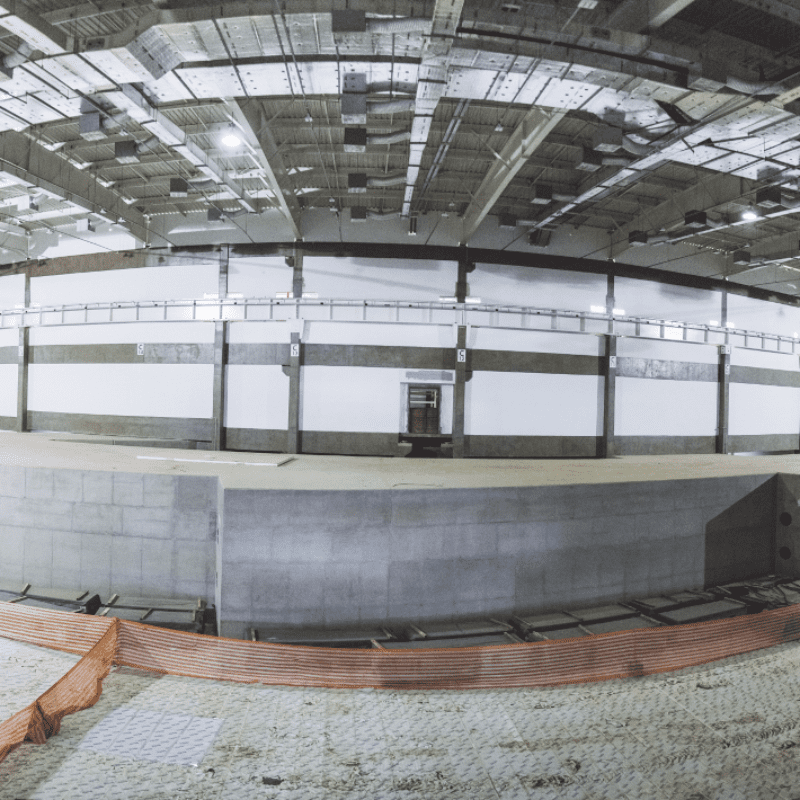
Português:
Imagem interna do hall experimental em finalização.
English:
Internal image of the experimental hall being finalized.
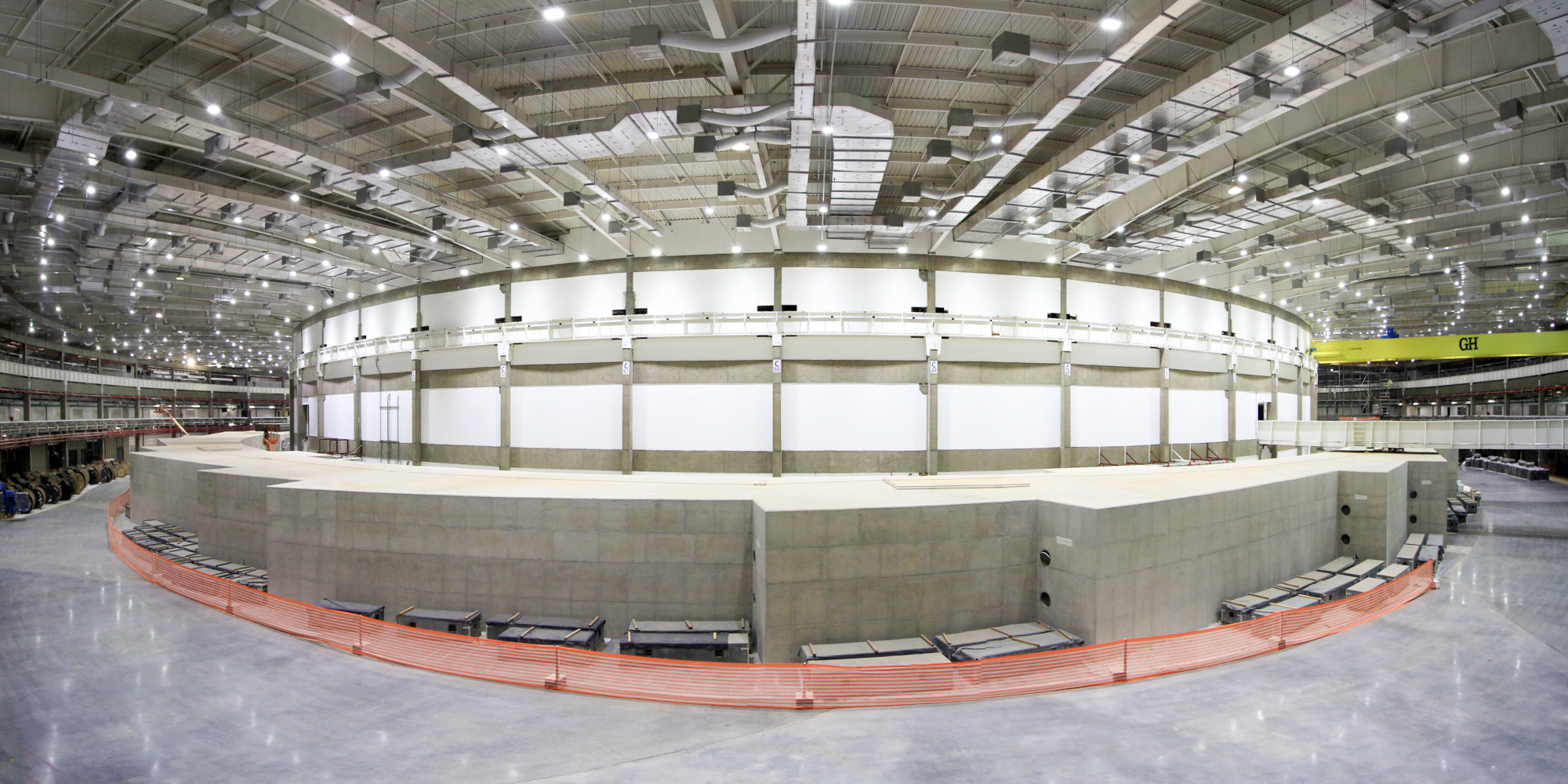
Panoramic image of the experimental hall of Sirius, near its conclusion.
First, the linear accelerator is installed, and on May 8, 2018, the first electron beam successfully travels its entire length. Then, the installation of components of the injector accelerator and the storage ring begins. On November 11, this process culminates in the arrival of the first electron beam at the entrance to the booster.
A few months later, on March 8, 2019, the first complete electron loop occurs in the booster. Later, on November 22, the first electron loop in the storage ring is achieved.
This milestone demonstrates that thousands of components, such as magnets, ultra-high vacuum chambers and sensors, were working properly and synchronously, and that the entire structure, including parts of hundreds of kilograms, had been aligned within the micrometric standards necessary to control the trajectory of the particles sufficient for the first commissioning phase. Thereafter these parameters of the accelerators and beamlines have been constantly improved to achieve the design requirements.”
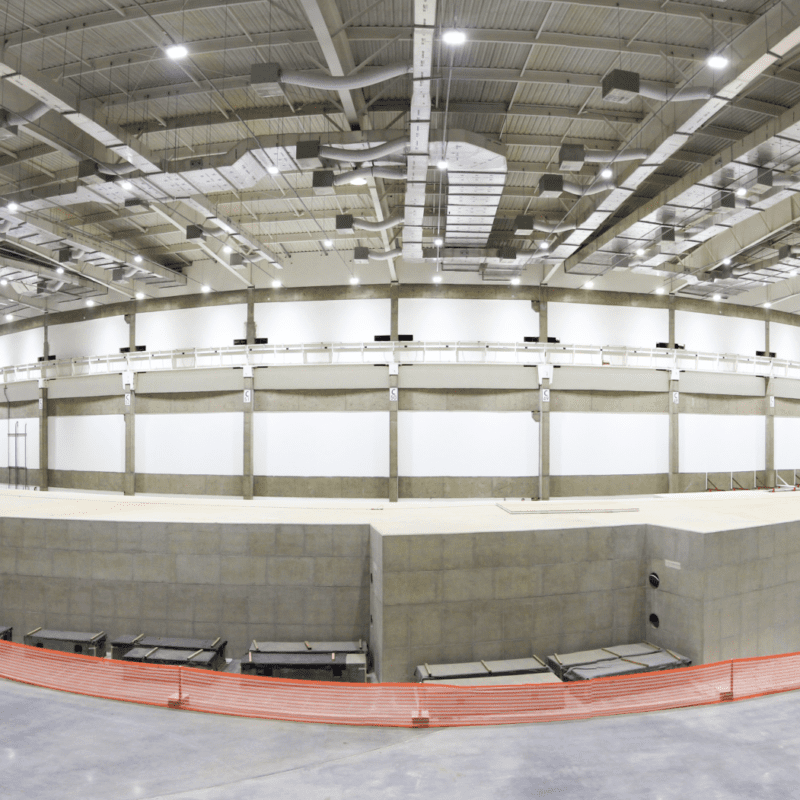
Português:
Imagem panorâmica do hall experimental do Sirius praticamente pronto.
English:
Panoramic image of the experimental hall of Sirius, near its conclusion.
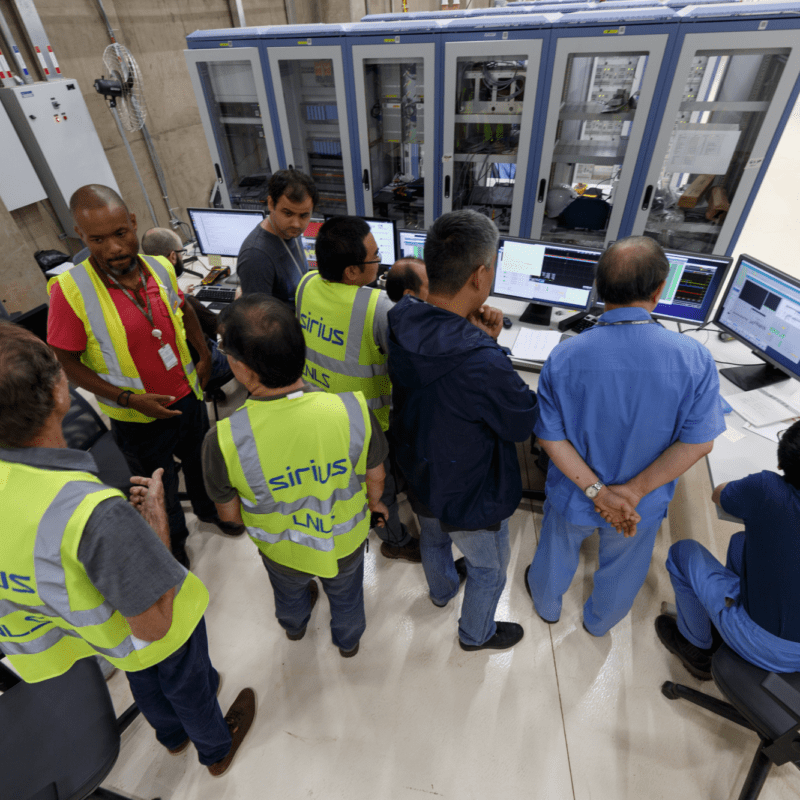
Português:
Equipe do LNLS e do SINAP (Shanghai Institute of Applied Physics) no momento da geração do primeiro feixe de elétrons no acelerador linear do Sirius.
English:
LNLS and SINAP (Shanghai Institute of Applied Physics) teams at the time of the generation of the first electron beam in the Sirius' linear accelerator.
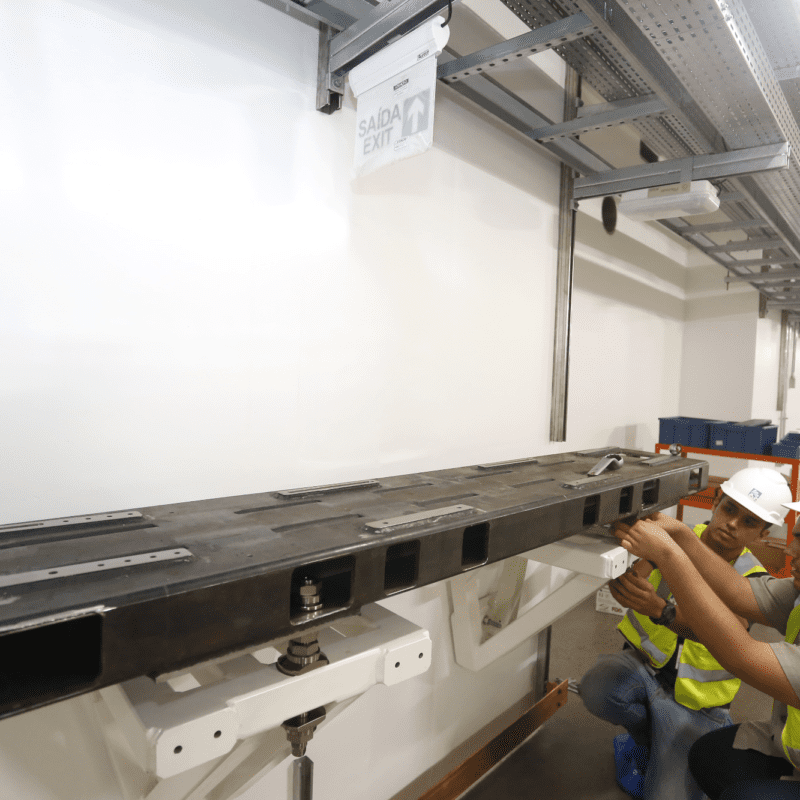
Português:
Início da montagem do acelerador injetor (booster) do Sirius.
English:
Beginning of the assembly of Sirius' injector accelerator (booster).

Português:
Montagem do monocromador de raios X de uma das estações experimentais.
English:
Assembly of the X-ray monochromator of one of the experimental stations.
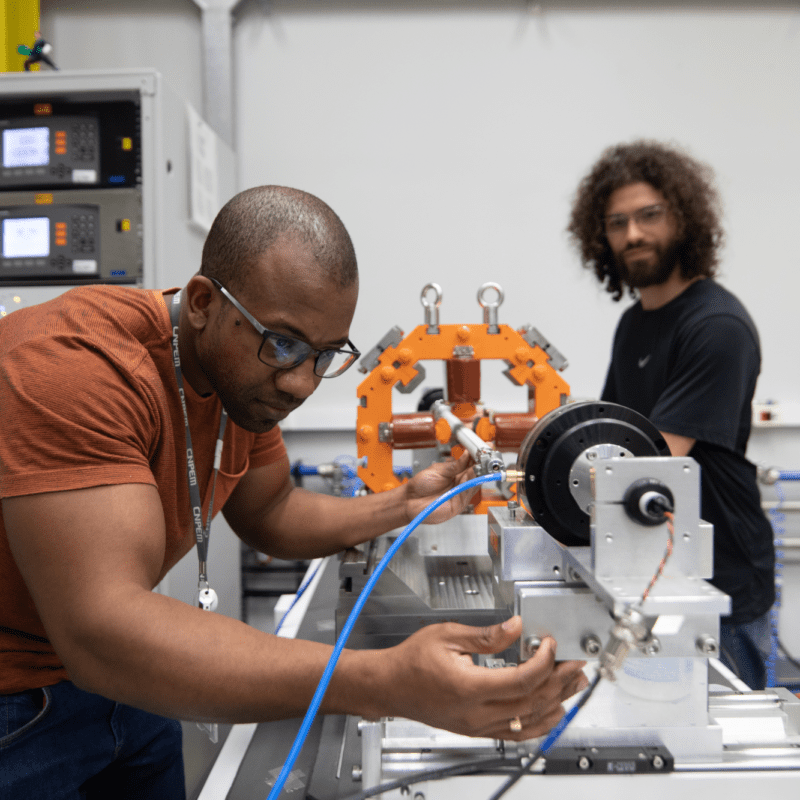
Português:
Profissionais do CNPEM verificam a qualidade dos ímãs que compõem os aceleradores.
English:
CNPEM professionals verify the quality of the magnets that are components of the accelerators.
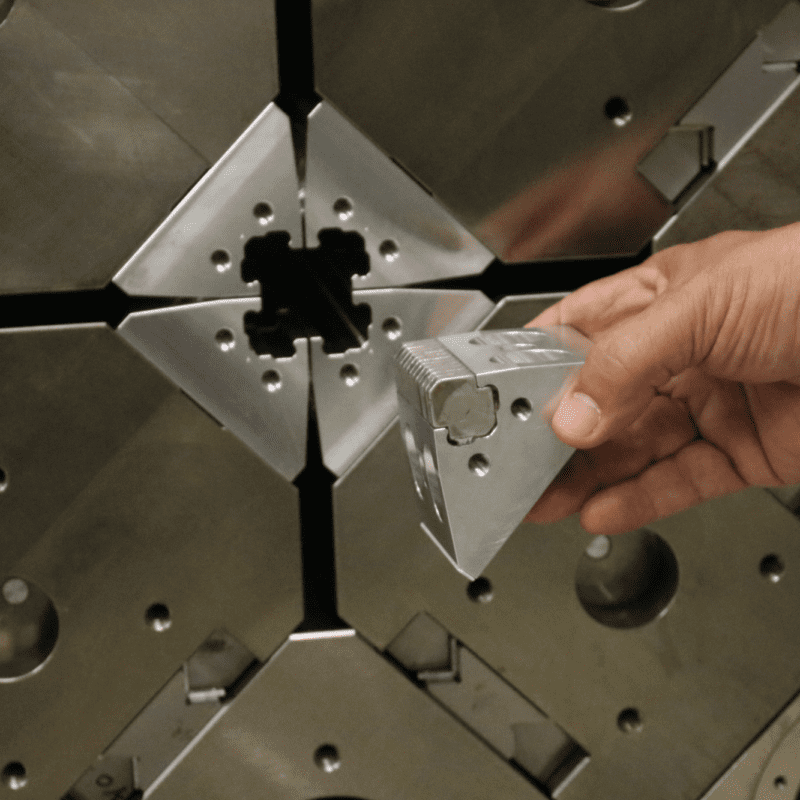
Português:
Detalhe do protótipo de ondulador, uma das estruturas responsáveis pela geração da luz síncrotron.
English:
Detail of the ondulator prototype, one of the structures responsible for generating synchrotron light.

Português:
Processo de instalação das câmaras de vácuo do acelerador principal. A equipe veste roupas especiais para evitar a contaminação dos componentes em vácuo por poeira e outros particulados.
English:
Installation process for the vacuum chambers of the main accelerator. The team wears special clothes to avoid contamination of the vacuum components by dust and other particulates.
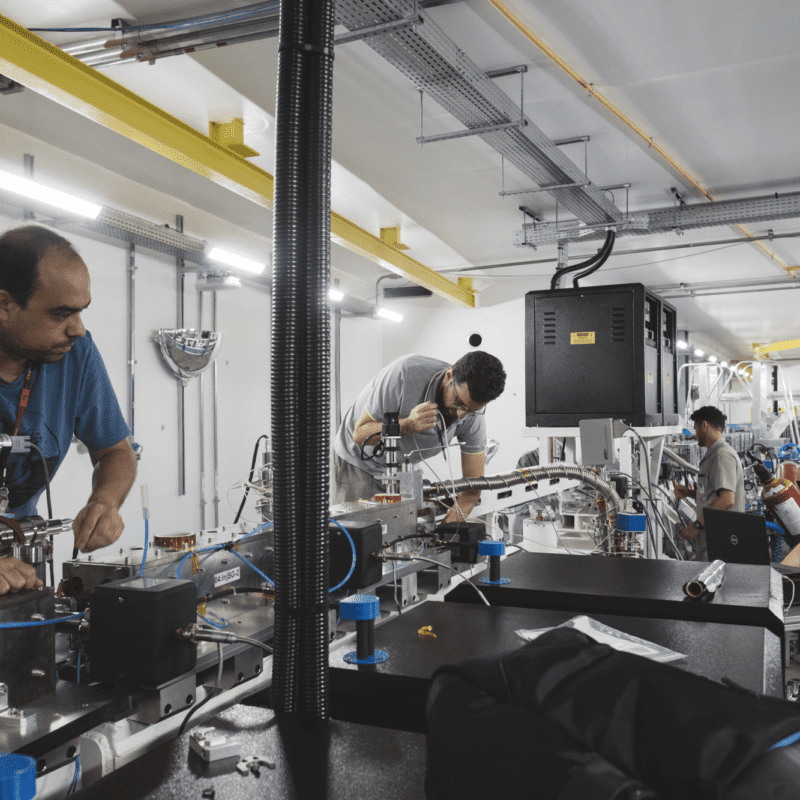
Português:
Equipe realiza ajustes nos aceleradores durante comissionamento.
English:
Team makes adjustments in the accelerators during commissioning.
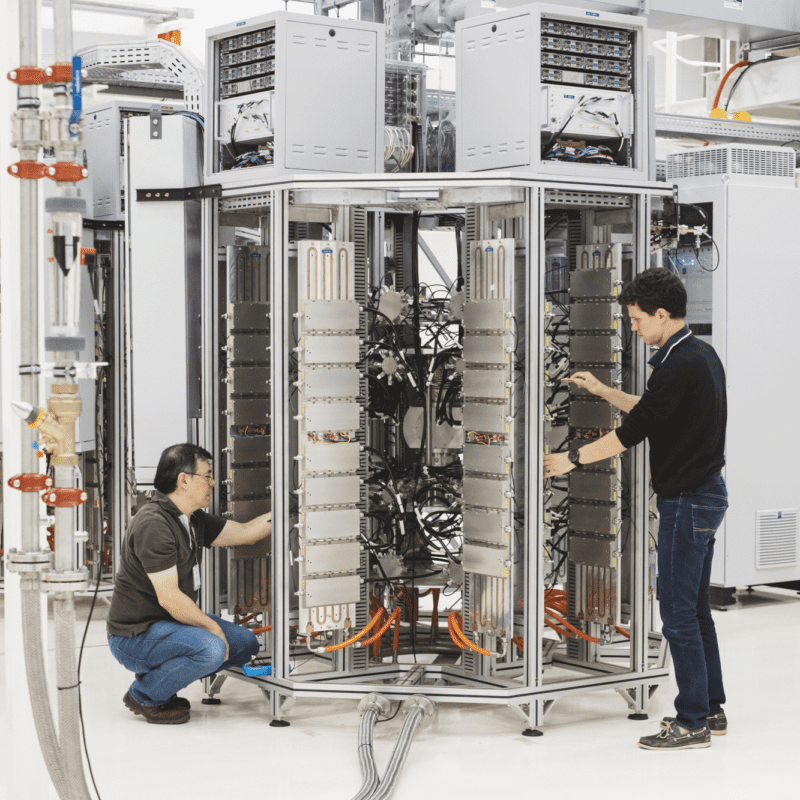
Português:
Equipe do CNPEM trabalha na instalação de equipamentos do sistema de radiofrequência, relacionado à aceleração dos elétrons no Sirius.
English:
CNPEM team works on the installation of equipment of the radio frequency system, related to the acceleration of electrons in Sirius.
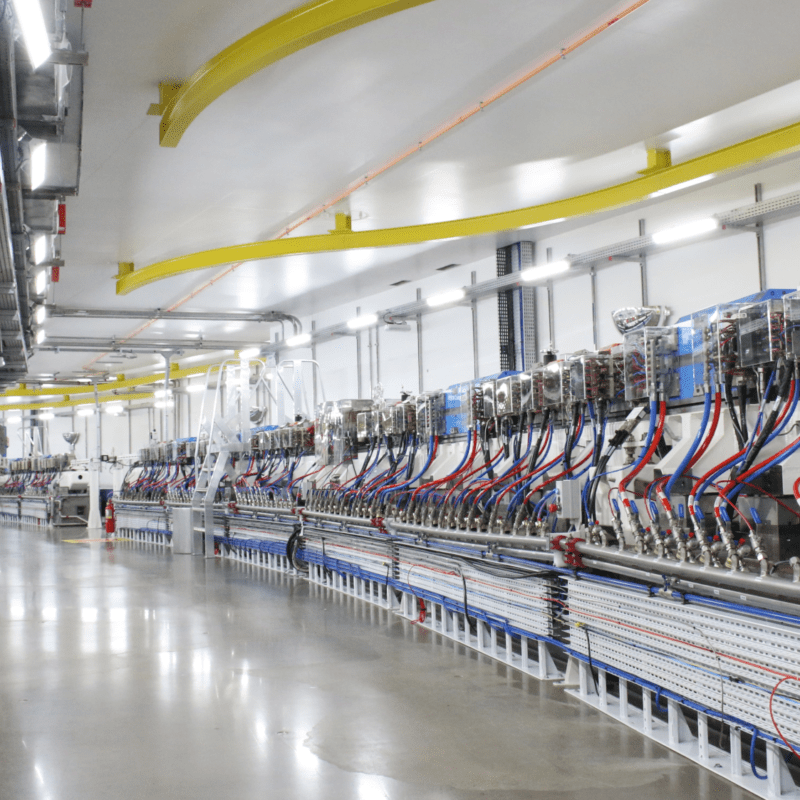
Português:
Visão interna da blingadem com os aceleradores de elétrons já instalados.
English:
Internal view of the shielding with the electron accelerators already installed.
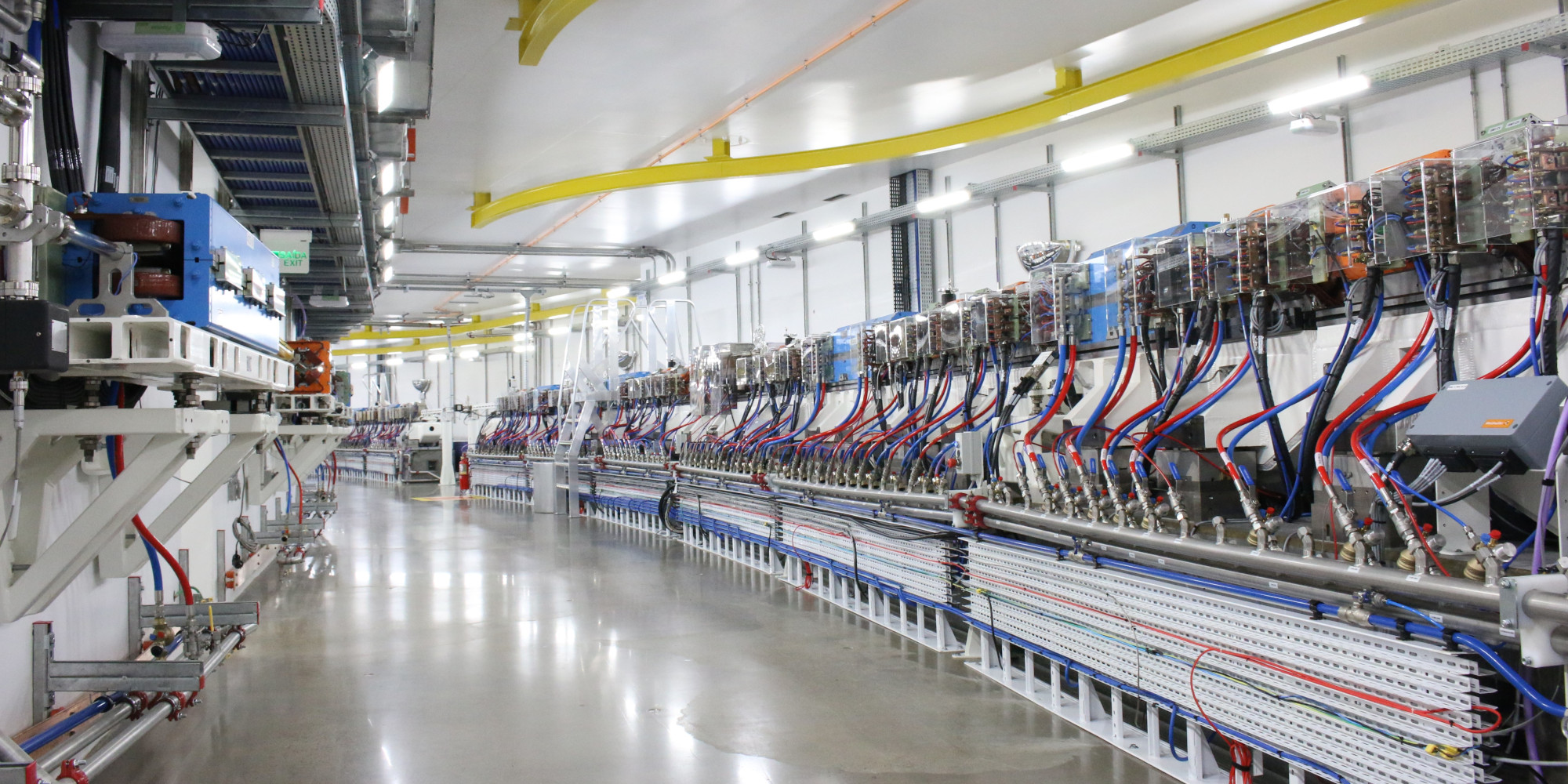
Internal view of the shielding with the electron accelerators already installed.
On December 14, the team managed, for the first time, to keep electrons circulating in the main accelerator for several hours, an essential condition to produce synchrotron light with the appropriate quality for scientific experiments.
Finally, just two days later, the CNPEM team obtains the first X-ray images generated by Sirius. This achievement was possible with the arrival of synchrotron light for the first time in a research station set up temporarily for testing and demonstrated the potential of the tool for generating high-resolution images, even if still at a power thousands of times lower than designed for the machine.
Later, in July 2020, CNPEM researchers performed the first scientific experiments of Sirius in the MANACÁ beamline, the first to start operating, to evaluate the quality of the results generated by the beamline. One of the first samples analyzed was the 3CL protein of the SARS-CoV-2 coronavirus, which participates in the process of replication of the virus inside the organism during infection and is essential for its life cycle.

In July 2020, CNPEM researchers performed the first scientific experiments of Sirius in the MANACÁ beamline.
In September, while still in the scientific commissioning phase and performing experiments under limited conditions, MANACÁ was made available to researchers experienced in protein crystallography so that they could contribute to the molecular understanding of the coronavirus. On October 21, 2020, the MANACÁ beamline began accepting research proposals for other the study of other samples, in addition to those related to Covid-19.
The following year, in October 2021, five new beamlines – CARNAÚBA, CATERETÊ, EMA, IPÊ and IMBUIA – started receiving research proposals from external researchers while in the scientific commissioning. At the occasion, support laboratories and the data processing unit, equipped with supercomputers, were also delivered.
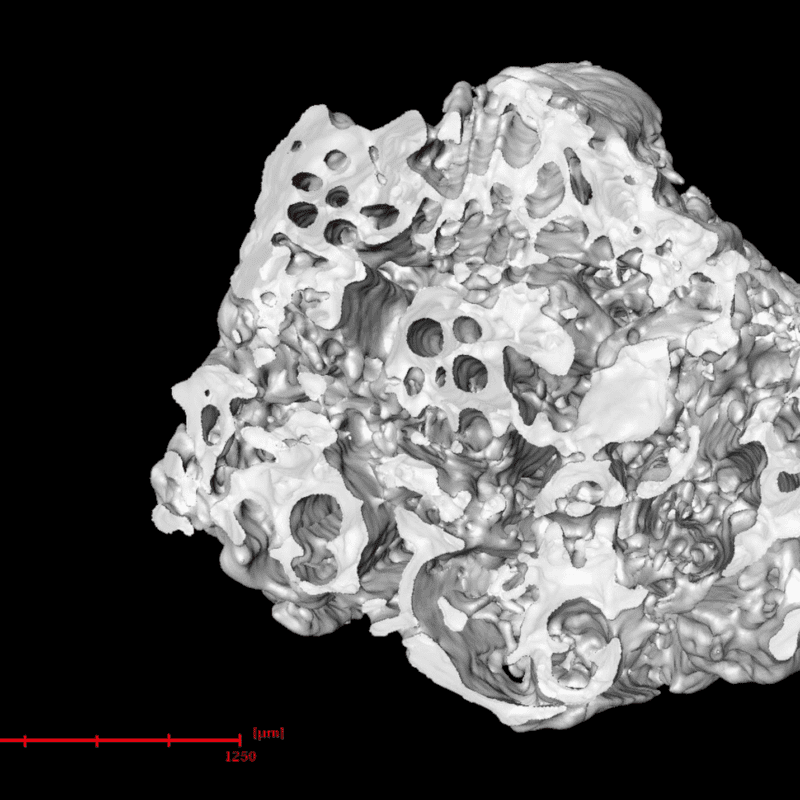
Português:
Reconstrução tridimensional de uma rocha carbonática, que tem a mesma composição das rochas de reservatórios de petróleo do pré-sal brasileiro. Uma das primeiras imagens produzidas em uma das linhas de luz do Sirius, ainda em caráter de testes.
English:
Three-dimensional reconstruction of a carbonate rock, which has the same composition of the rocks in the Brazilian pre-salt oil reservoirs. One of the first images produced in one of Sirius' beamlines, still under test conditions.
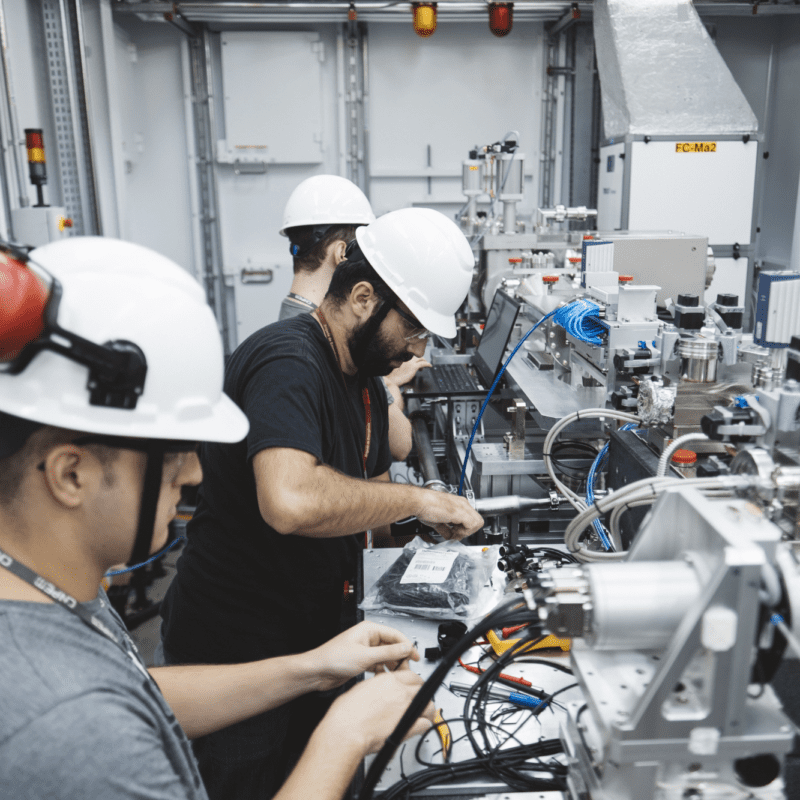
Português:
Equipe do CNPEM monta a linha de luz Manacá.
English:
CNPEM team assembles the Manacá beamline.
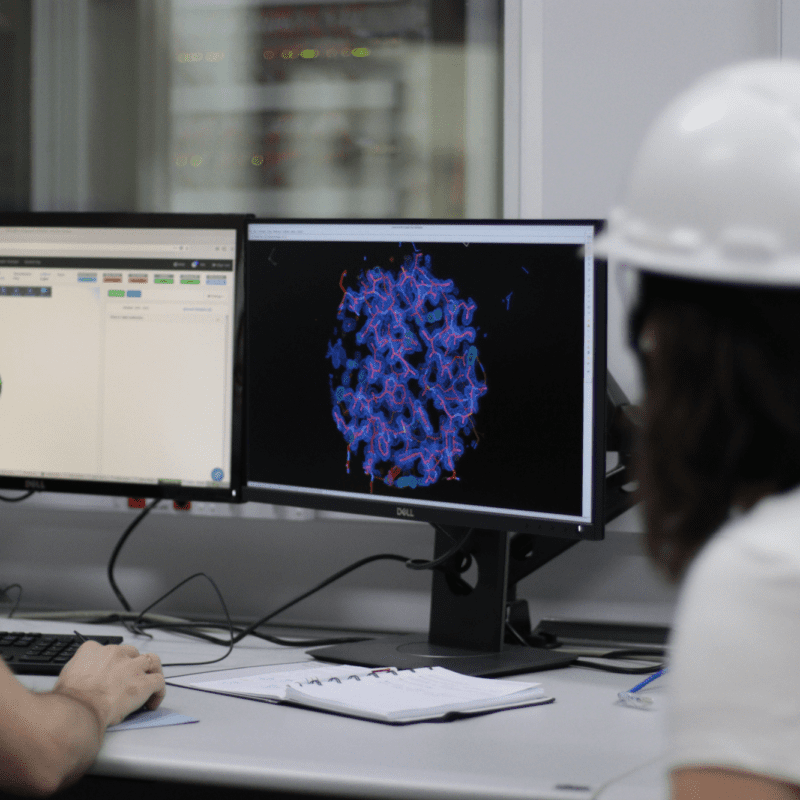
Português:
Pesquisadoras do CNPEM trabalham nos primeiros experimentos científicos realizados no Sirius.
English:
CNPEM researchers work in the first scientific experiments performed at Sirius.

Português:
Visão do hall experimental do Sirius durante a instalação das primeiras linhas de luz.
English:
View of Sirius' experimental hall during the assembly of the first beamlines.
CNPEM’s team is now dedicated to reaching higher and higher electric currents in the electron accelerators, necessary to produce synchrotron light of sufficient intensity to carry out advanced scientific experiments.
